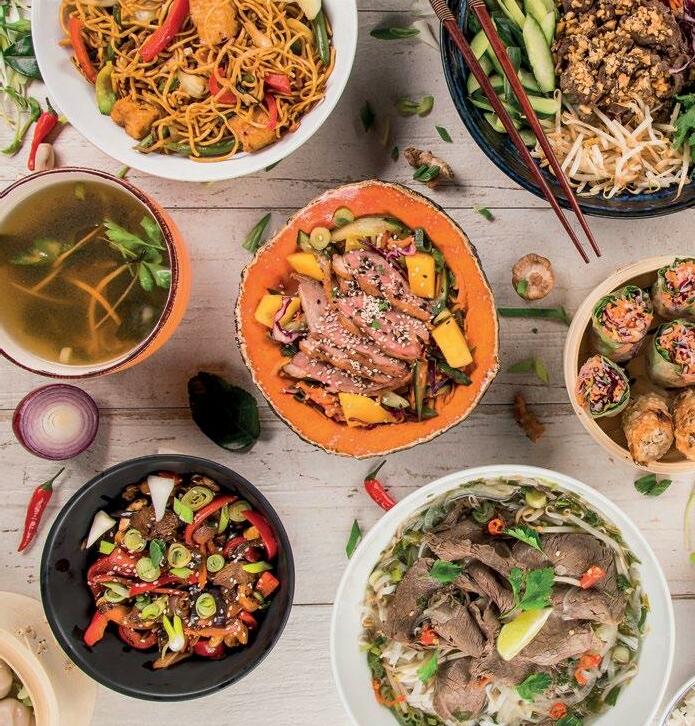Michelle Aldana






On your next vacation, see you at








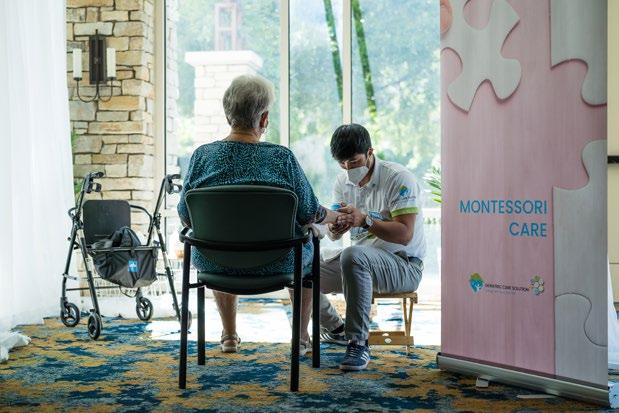


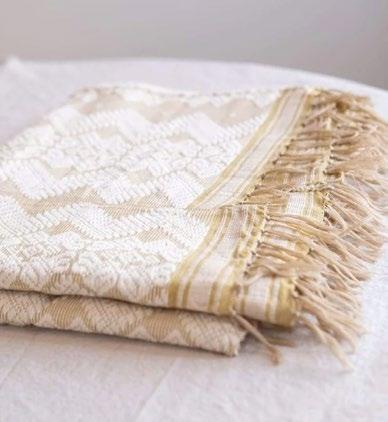


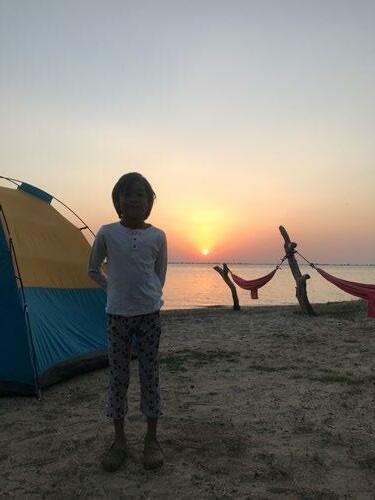



Agatha Verdadero, Berger Capati, Francine Alessandra Vito, Geneva Liz Isaac, Karen Mae Madalla, Myls Rubio, MZ Akil, Sharon Masler
Published 3 times a year
The opinions expressed in The Filipino Expat magazine do not represent the views of The Filipino Expat company. While we have exhausted every effort to ensure the accuracy of the information contained in this publication, neither The Filipino Expat nor its editors, contributors and staf will accept any responsibility for any omission, typographical or printing errors, inaccuracies or changes however caused. Our editorial and creative teams reserve the right to edit any material submitted at our discretion. All texts, photos and graphics have been used with the permission of the author or artists. All rights are reserved. No part of this publication may be duplicated or reproduced in a whole, in any form or by any means without the publisher’s prior written permission.
Comments and complaints should be addressed to:
The Publisher
The Filipino Expat Magazine
2e Maasbosstraat 54, 3134XK Vlaardingen
The Netherlands
E: editor@thefilipinoexpat.com Mob: +31 639311392
Filipino food we lovegrowing up with
Summerof culture
Karen Mae Medalla is an IBDP Chemistry and secondary science teacher who spent four years in Khartoum, Sudan from SY 2018 to 2022, at the height of its revolution and the pandemic. Prior to Sudan she taught in Dhaka, Bangladesh and the Philippines. She has recently moved to her current school in Ho Chi Minh City, Vietnam.

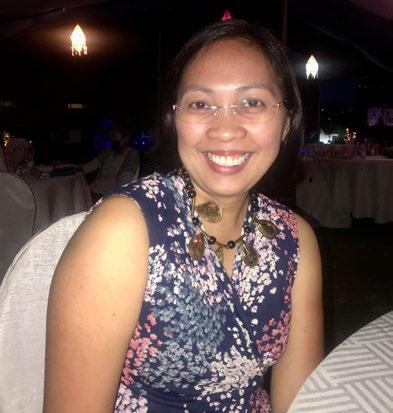

SHARON MASLER has 25 years ex perience in finance and accounting. Her background includes planning and performing audits, reviews and compilations of financial statements, primarily for medium-sized, private ly-held companies in manufacturing and distribution industries.
Francine Alessandra Vito is a writer, serial thrifter, and an advocate for the slow living lifestyle. You can find her sustainable fashion and lifestyle posts on her Instagram account, @ francinealessandra17.

Myls Rubio worked in marketing and advertising before joining the Philippine Foreign Service. She is an alumna of the UST Singers, and a soloist of the Diplomatic Choir of Berlin. She is married with three children and is currently based in Germany. She and her family shares their love for music through music videos and liver performances. online performances.

Geneva Liz Isaac works for a local bank during the day and hustles as a writer at night. She geeks out about conspiracy theories, Harry Potter, anime, fashion, and classical music. In rare times that she’s not glued to her computer typing her heart away, she can be found in museums or beautiful cafés.
MZ Akil worked in publishing and briefly in television in the Philippines before moving to the UK in 2006. She spends her train journey to and from London—where she has a remit within luxury fashion—ran domly musing about life and oc casionally talking about it in her blog. Her lifelong aspiration is to write stories rather than emails.

Alden Joshua Cedo is a design professional working for one of the Philippines’ biggest real estate companies. If he is not tinkering with Adobe applications, he can be found in the gym or in his pad listening to music.


Berjer B. Capati is an audiovisual director, editor, screenwriter, illustrator and playwright. He has lived in Barcelona for four years and has a degree in Humanities with higher studies in Audiovisual Communication.
Agatha Vervadero is a writer and editor from Nairobi, Kenya. She finished her MFA in Creative Writing at De La Salle University Manila and her BA Humanities at University of the Philippines Diliman with honors. While not immersed in her work or playing with her fur baby Sam, she does extreme adventures in the wild.

Summer is finally over. And what a suffocatingly hot summer it was. Europe was hit by one of the worst heat waves in years which created havoc across the continent. Coming from a tropical country, I thought I was already used to the high temperature and heavy humidity. But I wasn’t. The oppressive heat kept people indoors for days praying for rain and willing the fresh breeze of autumn to blow early.
And indeed autumn came unseasonably ahead of schedule. Downpours and cool winds in the last weeks of August were answered prayers. Saying goodbye to the headache-inducing heat was such a relief for the senses! Suddenly, the good cool days are here again.
To usher the start of the cold season, our Autumn/Winter issue is filled with adventure and stirring expat stories coming from unexpected places around the world. We are excited to have 1993 Miss Asia Pacific and actress Michelle Aldana on our cover. Michelle, who at the height of her career decided to drop everything to start a new life in Europe, surprised her fans and critics alike. Currently based in South Africa, Michelle shares with us her life as a wife, a mother, a businesswoman and an artist, and the challenges of living outside her comfort zone.
Expats Alvin Comabig Sta. Iglesias, Quintin Cavite, and Gary Belarmino take us for a ride on the busy highways of Germany, the meandering roads of Tuscany and the boundless desert of Saudi Arabia, to give us a glimpse of how they face the perils that come with their jobs.

Have you ever wondered what it is like to live in one of the hotteest cities in the world? International school teacher Karen Medalla describes her expat life in Khartoum, Sudan.
In his article “Aliens to these small worlds’’, theater director Berjer Capati gives his personal take on racism as he reflects on his experience living in Spain and raises the question, “Is there such a thing as subtle racism?”. Our columnist MZ Akil’s “Walang kupas” ponders on the beauty standard in Philippine society and how her perception of beauty has evolved throughout the years.

Raymond Villaroman, owner and CEO of Geriatic Care Solution (GCS) tells TFEM’s Dheza Aguilar about his dreams of changing the way America takes care of its elderly. Find out why he, from a reluctant expat to a mission-driven entrepreneur, is bent on making his dream come true. Philippine ambassador to Morroco Leslie Baja tells us why his family is a big part of his pastime. Sharon Masler explains why we pay tax penalties.
Have you planned your autumn/winter getaway yet? Discover the secret wonders of Albania and Kosovo as Geneva Isaac shares her unforgettable trip to the Balkans and the lessons she learned from the people she met and the places she visited. Fancy a glass of glühwein (mulled wine) while exploring the magical Christmas markets of Germany? Berlin-based Myls Rubio takes us to her three favorite Christmas markets in Berlin with bonus tips for moms with little kids.
And speaking of the season of Ho ho ho, as a way of habit, The Filipino Expat is delighted to give you top picks for your Christmas giveaways with products made by Filipino creators abroad. Not only that, we also made a list of favorite Filipino traditional Christmas grub of 12 Pinoy chefs and restaurant owners all around the globe. Take your pick and bon appétit!
And so there you are dear fellow expats, we hope you enjoy our Autumn/Winter 2022 issue. In a matter of weeks, 2022 will take its leave and a new year is coming. No matter what happens in 2023, we will stay visible and strong. That despite the chaotic world we live in, we always thrive and grow. For everything that came and went, hits and misses, ups and downs, we are thankful for 2022. As gratefulness is not only a relief for the senses, but for the soul as well.
Formany of us who moved abroad, experiencing a season change is nothing short of fascinating. Fall in particular just feels magical. What is this weird alchemy that turns leaves into red or brown, and finally causes them to fall to the ground? Where did all the basil and tomatoes go? Why does the light seem different? Second to snow winters, Autumn or Fall is a season that is so foreign to those of us who are used to only two seasons. But it is also somewhat familiar and comforting, bringing in delightful sensations
that come with the invigorating chill in the air, the smell of crack ling fires, crunchy leaves on the ground, and the filtered glow of early autumn mornings. It all feels like an invitation to slow down and be grounded. And we certainly deserve it, after the recordhigh heatwave this summer!
As we move into the new season, we’re sharing some of our top picks that will help you stay cozy, zen, and relaxed all through the autumn season. The best part is that they’re all made by Fili pino businesses and creators abroad.
By Francine Alessandra Vito1. Manila Candle - Turn your favorite room into cozy central with these hand-poured, scented soy candles from Manila Candles, a Californiabased shop with over 700 sales and a 5-star rating on Etsy. Best-selling scents like Sampaguita, Calamansi, and Boracay easily transport us back to the Philippines. Aside from fragrances based on food and places, you’ll also find candles with Pinoy witty-isms or candles inspired by Filipino family members. Website: manilacandle.com Etsy shop: etsy.com/shop/ ManilaCandle

3. Mindfulness Moments and Art of Mindfulness Coloring Books by Emma Farrarons - The adult coloring book trend is definitely here to stay. And for good reasons, too- they’re a great de-stressing tool, helpful for improving mindfulness and concentration. Emma Farrarons is a Philippine-born, Londonbased artist and the creator of the Mindfulness Moments and Art of Mindfulness coloring books. They’re beautifully designed and filled with exquisite scenes and patterns that inspire joy. You’ll be coloring your way to calm in no time.

2. Sand Dune Throw Blanket from Nara Studio NY - Autumn is definitely blanket season. Curl up in this luxurious, hand-woven throw blanket from Ilocos, a province known for its rich weav ing tradition. The blanket is large and comes in a lovely neutral sand color with patterns of rivers and flowers. Nara Studio is a New York-based business that bridges indigenous artisans in the Philip pines and kababayans worldwide. Website: narrastudio.com Etsy shop: etsy.com/shop/NarraStu dioNY

5. Season’s Harvest Coffee Bundle by Kapé - Kapé is a social venture that ethically sources its coffee beans directly from indigenous farmers in the Philippines. The beans are then batchroasted in the Coast Salish Territories in Vancouver, Canada. The Season’s Harvest Coffee Bundle features three coffees from three different farmers, proudly given their due recognition on the label.
Website: kape.coffee/
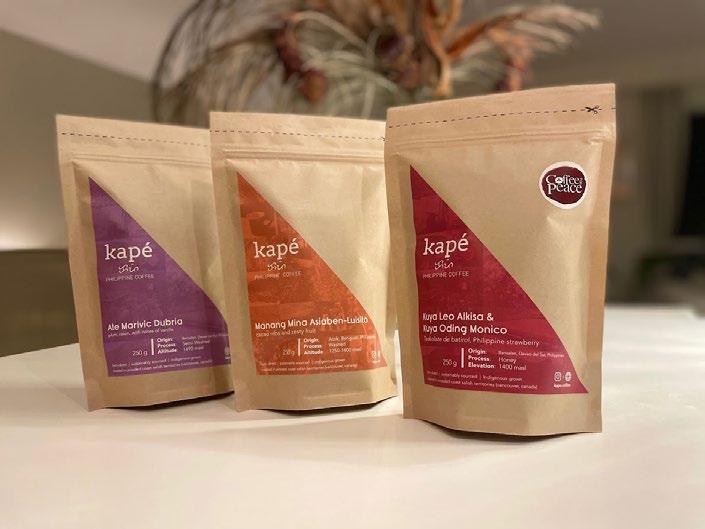

4. Dear America: Notes of an Undocumented Citizen by Jose Antonio Vargas- Dear America: Notes of an Undocumented Citizen should be on your autumn reading list. Written by Pulitzer Prizewinning journalist Jose Antonio Vargas, this book is part memoir and part exploration of the plight of undocumented immigrants. Vargas writes, “This book is about constantly hiding from the government and, in the process, hiding from ourselves. This book is about what it means to not have a home.” The book first came out in 2018 and has already resonated with many readers, with an average rating of 4.3 stars with over 9,000 reviews on Good Reads. Available on Amazon and other bookstores.


Proudly Filipino products to welcome the changing of seasons
6. Mugs from Shop Les Belle - Drink your favorite warm bev erages in these unique, minimalist mugs from Shop Les Belle, a US-based online business. The black mug features a quote from our national hero and one of the first Filipino expats, Jose Rizal. The white mug has a dainty line drawing and script that's perfect for those who love feminine designs. Etsy shop: etsy. com/shop/ShopLesBelle


8. Matapang and Suplada Hoodies from Pinay CollectionFilipino words like “suplada”, “mataray”, and “maarte” often have negative connotations. Jovie Galit, the Toronto-based creator behind Pinay Collection, wants to reclaim pejorative words in the Filipino language through her clothing line. The Pinay Collection sweatshirts are soft, cozy, and full of at titude. They’re also size-inclusive, carrying sizes from Extra Small up to 4XL. Website: pinaycollection.com


7. Chunky Knit Beanies and Scarves from Witch That Knits - These handmade chunky knit beanies and scarves from US-based artist Rose Thompson come in fun, whimsical colors, and patterns. The bright and happy shots of color are just what we need during cold and dreary days. Website: witchthatknits.com/ Order through: witchthatknits@gmail.com or instagram.com/ witchthatknits
For the ultimate Filipino Christmas vibe, nothing will beat the one and only Filipino parol, our happy and colorful version of the Christmas lantern. Whether it is a simple version made of bamboo and cellophane, or an elaborate one made from capiz, the ubiquitous parol welcomes Christmas in almost all Pinoy homes. Get your own parol from these websites: Netherlands (kahoy.nl), USA (parolsofamerica.com) Ger many (onlineparolshop.com), Canada (wowmabuhay.ca)

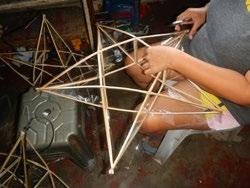
9. Unisex Oversized Ifugao Jacket from Vinta Gallery - Big, boxy blazers are back this fall. Incorporate the trend into your wardrobe with this modern meets traditional Ifugao textile blazer from Vinta Gallery. Depending on how you style it, this one-of-a-kind piece can be dressed up or down for any occasion. It’s also unisex, so don’t hesitate to lend it to your favorite tita/bunso/kuya. Website: vintagallery.com

10. Tzokolaté - What is cozier than sipping a nice cup of chocolate drink on a chilly Sat urday while enjoying a bar of Filipino chocolates? Tzokolaté is a Swedish-based chocolate brand born out of nostalgia for sikwate, a dark chocolate drink made from tablea. Chef Elle Philipps together with her partners Rose and Jenny started selling tablea tablets, chocolate snacks, and chocolate bars including Auro and Theo and Philo, all made from authentic Filipino cacao beans. Order from tzocolate. com/collections/all.

An e-commerce platform wants Filipino expats to give local and sustainable products to their loved ones back home.
IethInolino-Idzerda does not send balikbayan boxes anymore. The Amsterdam-based Filipino expat and co-founder and CEO of Mithi & Co., a gift-giving platform in the Philippines, thinks that sending a balikbayan box is a trend that does not belong to contemporary times. She believes that the money Filipinos abroad spend on giving gifts to their loved ones in the Philippines would make a bigger impact when spent on local Filipino products

Together with co-founders Sarah Fernandez and Niccolo Tuazon, who are both children of Filipino expats, they created a shopping platform based on the Filipino idea of a balikbayan box or sending a box of
gifts to relatives in the Philippines. But instead of shipping imported products thousands of miles away from the other side of the world, the business trio decided to take the imported out of the box and fill it with locally-sourced products
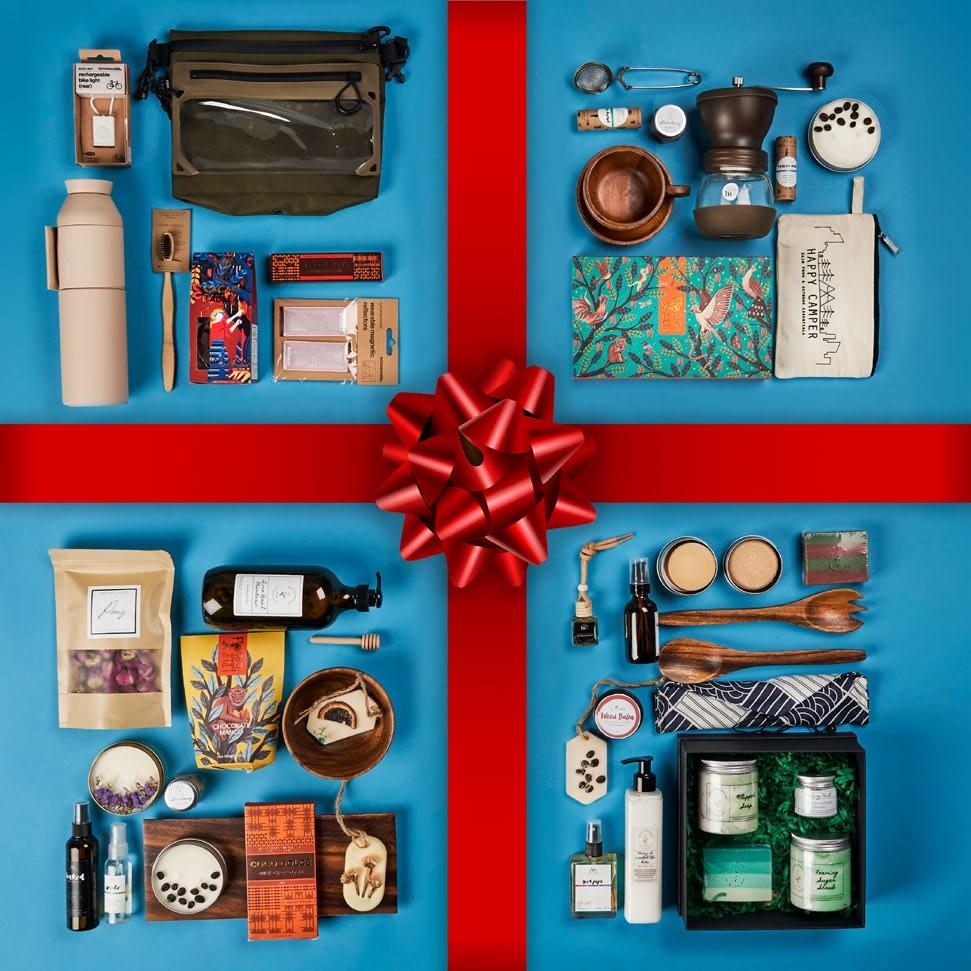
instead, hoping to create a cultural shift in the process.
“When the pandemic hit, a lot of Filipinos could not go home to the Philippines. You are missing milestones and family occasions. What can we do to address
an e-commerce gifting platform that would address that need. The idea was to “gift local” even when you’re abroad. It’s a word-play on the term balikbayan Ibalik sa bayan, the attention and the revenue. For example, if I want to give a gift to my sister in Manila, I go to the Mithi & Co. website and then select the gifts already in Manila. The merchants are there, the gifts are produced and delivered locally,” explains Ieth.
Before jump-starting their platform, they conducted a small survey to find out what products Filipinos abroad would likely give their parents, or families and at what price point they are willing to spend. Their survey also revealed that when Filipinos are given a platform that offers different product choices and a secure payment method, they are more inclined to buy and support local Filipino products.
artisanal Mithi & Co. officially opened their webshop in December 2020, while online shopping was booming because most retail shops were closed. Their driving mission is to promote artisanal Filipino products, choosing merchant partners that are Filipino or majority Filipino, and women owned. They want to focus the spotlight on local producers, artisanal products and small and medium Filipino businesses that don’t have access or financial capacity to reach a wider or more international buying market.
Mithi & Co. offers gift packages for different occasions and varying budgets. Clients can choose carefully selected and assembled gift packs from as low €24 and as high as €200. According to Ieth, their bestsellers are chocolates, including the popular Theo and Philo brand that uses high
quality cacao beans from Mindanao. They also partnered with painter and graphic designer Joyce Makitalo for an exclusive collection of jewelry bundles for Mithi & Co.. Joyce works with third generation goldsmiths from Bulacan and artisans from Laguna to create unique designs, which have been worn by celebrities like Katy Perry.
“Filipino expats have this idea that they should give something imported to their families back home. That’s what we are trying to change. You don’t have to.” There are a lot of products in
the Philippines that are of high quality if not better. You can support these brands. Imported is not always better. We have products that can compete internationally.”
Filipino expats as catalyst for change Ieth believes that the new generation of Filipinos, especially those who have been or are living abroad and have been exposed to different cultures can create a culture shift from patronizing products bought from abroad to choosing more Filipinomade products. After living in the Netherlands for six years, she looks at consumer products differently now. She would compare things like linens, bags made
Ieth.
The future is local Unlike the contents of a traditional balikbayan box, which usually includes household items and consumables like home and personal care products or gadgets and clothes, Mithi & Co.’s gift boxes are more personal, taking into consideration the person receiving them, like kids, beach lovers, coffee lovers, pet lovers or occasions for which the gifts are bought for, such as weddings or anniversaries.
“The idea is still there, the nostalgia and the experience of unboxing a balikbayan box, the fact that you receive something, a gift that makes you kilig or excited. Only that it’s something local. It also reduces your carbon footprint because you’re not sending it through a courier. ”

from recycled tetrapacks, skin care, and home products made from local fibers to those produced in the Philippines and sold at much lower prices. She hopes that through Mithi & Co., they can carry this appreciation to Filipino consumers in the Philippines.
“Now there is a trend of supporting locals, and this goes both ways. Filipinos abroad have the capacity and desire to give these (local) gifts and when the recipients like the product, they might buy it themselves next time so they become repeat customers,” adds
The company is also working on adding more sellers to their growing list of merchants so that they can make their gift packs more affordable. They are also gearing towards creating a region-focused gift box that would highlight products from different regions in the Philippines, starting with a Cebu-themed box.


“We want Filipinos, whether in the Philippines or abroad, to know, promote and champion local Filipino products and brands,” Ieth says passionately. Visit www.shopmithi. com to see their collections of Filipino artisanal products you can gift your loved-ones at home this Christmas, or on other occasions.


We are used to seeing them in their formal suits, working hard serving the Filipino communities in different parts of the world as members of the diplomatic corps. But what do our ambassadors and consuls do when they are off from work?
AmbassadorLeslie Baja has been a career diplomat for 36 years now and it shows in the way he conducts himself in a video call for this article. He is engaging and warm in his tone of voice, but he is also laser-focused on his mission of strength ening the presence of the newly revived Philip pine Embassy in Rabat, Morocco, after its clo sure in the early 1990s. He has a daunting task ahead of him as his area of responsibility also covers Guinea, Mali, Mauritania, and Senegal.
Coming from ambassadorial posts in Egypt and Switzerland, Ambassador Baja is in his element. Being a diplomat runs in the family, he shares DNA of the former Permanent Representative to the United Nations of the Republic of the Philippines Lauro Baja, Jr., his uncle. With such an important and hectic posting, Ambassador Baja surely requires an equally heavy dose of downtime and relaxation to cope with the pressures of the office.
To my surprise, Ambassador Baja shares the simplic ity of his routine outside of and after work. “I go home to be with my family.” At the end of a workday, he loves nothing more than spending time with them, as long as he has no official evening functions. He doesn’t mention any exotic hobbies or passion-driven pastimes. He is a family man and enjoys eating out with them at a restaurant
By Agatha Verdaderosometimes. They enjoy discovering new eating places and trying out different cuisines, but Ambassador Baja also indulges his children’s cravings for the oc casional fast food. He mentions a few Ameri can staples available in Morocco—no different from what you would find in Philippine malls. And just like any typical family in the Philip pines, they also go out to watch whatever movie is worth watch ing on the big screen.
During long weekends, Ambassador Baja likes driving to other cities and towns, despite their long distances and travel times. He sits behind the wheel himself. It’s his way of relaxing with the family and enjoying the host country’s rich heritage. He is keen on visiting places with an abundance of his torical architecture that highlight the very best of the local culture. On Saturdays, he and his family do their grocer ies and other shopping errands, as they would back home in Metro Manila. I sense from Ambassador Baja’s re sponses a clear attempt at normalcy, grounding his family on Filipino habits and routines to counter the constant travels and household movements of a dedi cated diplomatic family.
Unique to Ambas sador Baja’s family life is the fact that his own wife is also an ambas sador and a career diplomat. Ambassador Noralyn Jubaira-Baja heads the Philippine Embassy in Pretoria, South Africa. While
they are both on the same continent, the extreme north-south expanse separating them longitudinally from each other does present its own challenges. Despite the distance, they are able to cope with the geographi cal separation, thanks to technology.
Ambassador Baja and their children sometimes fly over to visit Ambas sador Jubaira-Baja at her southern post. And every day, both ambas sadors communicate with each other over the phone.
The more Ambassador Baja shares about his personal circum stances, the more it makes sense that he puts such a high premium on family time as his pastime. He does not lose sight of what is essential, regardless of his diplomatic status.
Meanwhile, Ambassador Baja’s
office continues to buzz with activity daily. Shortly after presenting his credentials to the Mauritanian presi dency in June 2021, Ambassador Baja was able to establish the honorary consulate in the West African country in July 2022. He still has much to do

in the service of the Philippine gov ernment and the Filipino community in his area, but Ambassador Baja is up to the task—and the solid founda tion that family time gives him plays no small part in making that happen.
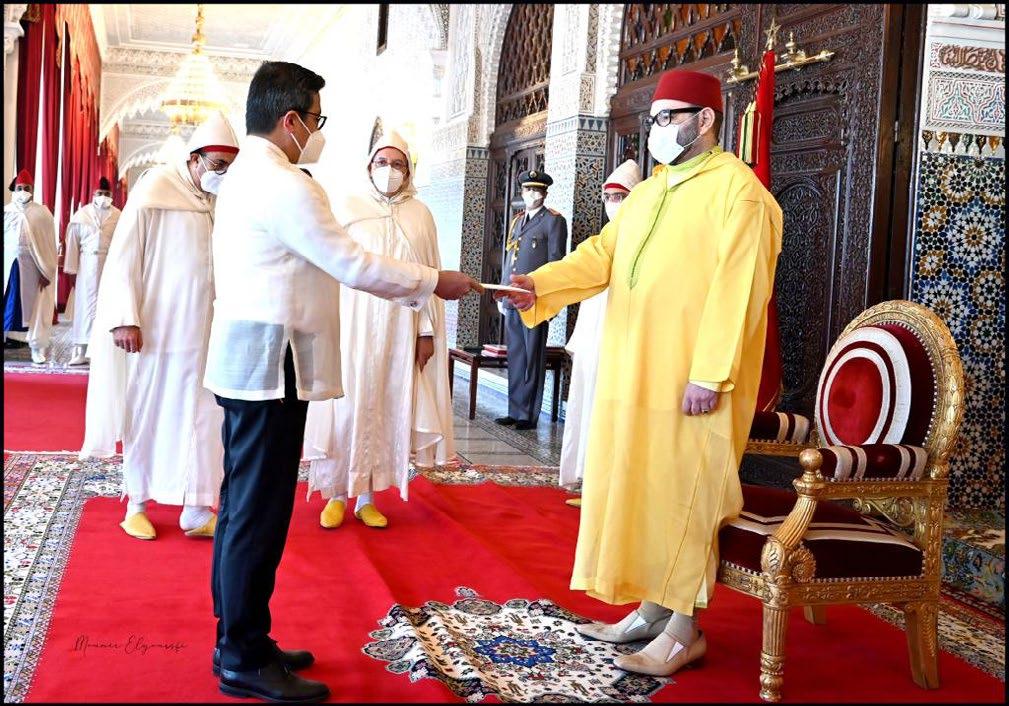
“At the end of a working day, I go home to my family.”Above: Ambassador Leslie Baja presents his Letters of Credence to His Majesty King Mohammed VI. Below: Welcoming the members of the Filipino community to Pistang Pinoy 2022.


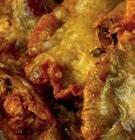







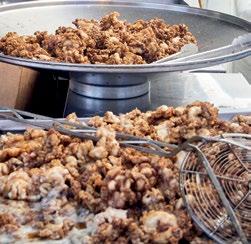





















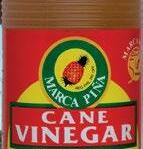



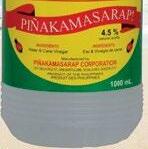



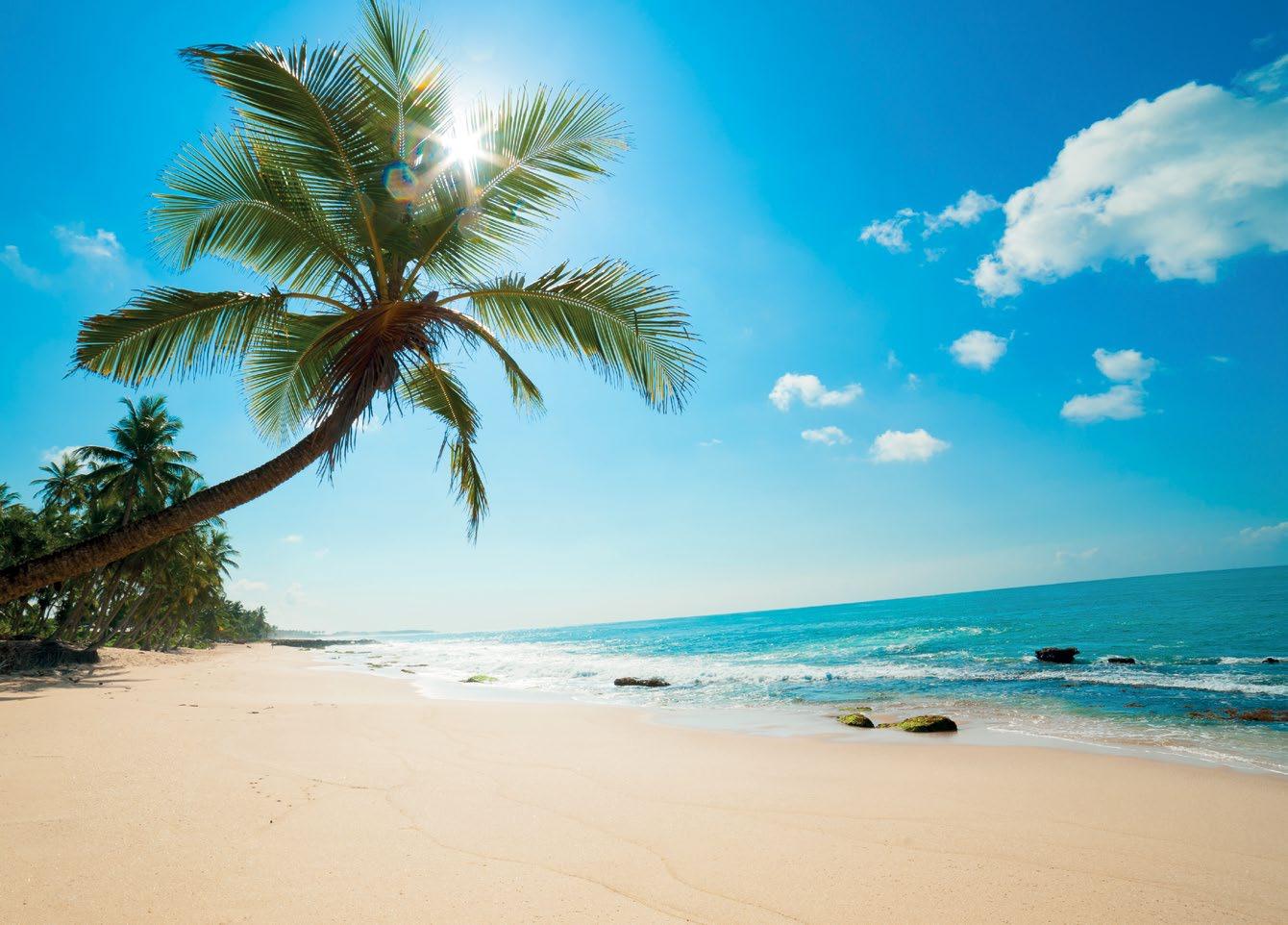























A container truck driver who trudges across the shifting sands of the desert of Saudi Arabia. A heavy truck driver who navigates the long winding highways of Europe. And an emergency responder who rushes to save peoples’ lives in the face of death. The Filipino Expat Magazine talks to three kababayans whose jobs put them behind the wheel and take them to uncertain roads. Roads where they defy exhaustion, danger and even nature’s wrath. Roads where they learn to embrace the adventure, the excitement, the unexpected. But beyond the thrill of it all, these kababayans are just doing their jobs, sacrificing their safety to give their family a better future and to serve the society they live in.
 By Nats Sisma Villaluna
By Nats Sisma Villaluna
With arms and face fully covered except his eyes, Gary starts the ignition of his long haul truck to start his first trip of the day. The sweltering heat is already unbearable. After hours of driving, the vehicle suddenly slows down and before Gary can manoeuvre towards the harder part of the ground, it is too late: the truck is bogged in sand.
Using a shovel, he digs out the sand in front of the stuck tires. However, the more Gary digs, the deeper the tires go. Two hours, 40 degrees and still stuck, Gary is getting frustrated. He is in the
Themiddle of nowhere with no telephone signal. Much later, somebody passes by and stops to help. After several attempts, the vehicle is successfully hauled out of the sand and off Gary goes to make three more deliveries .

Getting stuck in the sand is nothing new to Gary. He has been in similar risky situations working as a container truck driver for five years now, transporting water, diesel, portable offices or drilling equipment. “This usually happens two or three times a week. Especially if there was a sandstorm the previous night,” explains Gary Belarmino, 37, a container truck driver in Saudi Arabia.
No blankets, no pillows, no food
A native of Bago, Negros Occidental, Gary recalls his journey to Saudi Arabia in a Zoom interview one Sunday afternoon.
“I was an assistant soft drink delivery man in the Philippines when I applied as a heavy truck driver in Saudi. I never had any experience driving big trucks but I still gave it a try.” He was hired by a contractor firm for one of Saudi’s major petroleum companies .
“I arrived in 2017. I was very excited. In my mind, I was doing the right thing for my family.” His excitement would soon vanish
after finding themselves housed in what seemed to be a prayer room with nothing but a table inside the company compound in Dammam, a major industrial city 414 km from Riyadh. No blankets, no pillows, no food. They initially thought they were victims of illegal recruiters because of the sorry welcome. The following day, their boss came to see them and gave them food, blankets, pillows and cash advance.
As Gary didn’t know how to drive a trailer vehicle, he had to train for a month and pass a series of exams to be granted a license. Right after he got his license, they assigned him his first heavy truck.
All along, Gary thought that his salary would be SAR2,175 with food and accommodation, as promised to him in the Philippines. But to his surprise, his real salary would only be SAR 1,150, food and accommodation included, way below the monthly SAR 4,000, the average salary a truck driver earns in Saudi Arabia. Not wanting to cause complications at work, he didn’t say a word.
In his first months, Gary had to get used to driving long hours in the desert under extreme heat and bouts of homesickness.
“Saudi law requires truck drivers a maximum working day of nine hours except for emergencies. But in my company, we are required to finish our daily tasks. If we finish early, we can rest early. If it takes longer hours, we have to do it,” says Gary adding, “I didn’t have problems with the hours. I had a rude supervisor before. He would shout at me, insult me. Later I told him, release me if you don’t like me. After that, he became nice to me.”

From Dammam, Gary was moved to the nearby city of Haradh where he is currently based. He earns around SAR 2,700; higher than his initial salary but still below the average salary range. Gary is not complaining. With his earnings,

he was able to buy a house and lot for his family. “I feel fortunate that our company pays us on time. There were kababayans who had to seek Tulfo’s help because they weren’t paid for four months.”
Gary starts work at 6am by cleaning his truck right after breakfast. On an incident-free day, he makes four to five trips depending on the distance of the destination. To keep himself awake while driving, he starts his playlist and sings as loud as he can in the middle of the vast dusty land. He is also an active vlogger (KSA Truckers) on FB documenting his daily drive in the sea of sand. He parks his truck at around 5 pm, logs his day’s travel and gets out of the vehicle to grab dinner. If not too tired, he goes to the gym or plays basketball before hitting the sack at 11. If there is no trip for him to make for the day, he either tinkers with his truck, cleans his room or chats with his wife and his 7-year-old son.

Driving in the desert all these years has made Gary learn how to respect his environment and embrace its unpredictability. After all, the desert is one of the most challenging places to drive. Not to mention, dangerous. The sandy terrain combined with stupefying heat that can reach up to 55 degrees, with no network signal and a lack of assistance, can be life threatening.
“Once, I got stranded in the
desert for three days. I got lost, then my vehicle got stuck in the sand. The next day, I had to walk for several kilometers to look for help. When my truck was pulled out and was running, the tires burst I had to wait for rescue to fix the tires. They only came on the third day. While they were fixing my truck, we got caught in a sandstorm.”
In his vlogs, Gary sings the karaoke, tells jokes and gives tips to drivers planning to work in Saudi Arabia. He is jolly and seems to take things in stride. But behind his humorous quips and jests, he can’t always hide the exhaustion and weariness after a day of navigating an endless sandy terrain, under the punishing heat and some
unfortunate incidents.
“Despite everything, coming here was the right decision. I wouldn’t have been able to give my family a comfortable life if I hadn’t come here. Working abroad is good. As long as your family stays intact even if you are away from them. I have friends here who have broken families as a result of being away from each other.”
Gary could have changed his mind the moment he discovered the discrepancy in his initial salary. But he didn’t. What options did he have? Returning to delivering soft drinks back home was not going to give his family the comfort they have now. So Gary took the long road, a long dusty one.
It’s 4:30 am and Alvin takes his last sip of coffee. He says a short prayer then sets his tachocard. He doesn’t start his ignition right away so as not to wake up his neighbors from the noise of the engine. He first arranges the things on his dashboard before finally turning the ignition on. He fastens his seatbelt and manoeuvres the truck towards the empty German highway. As the small Philippine flag sways above the dashboard, Alvin greets himself, “Enjoy the day!”
Alvin Comabig Sta. Iglesias, 45, comes from a family of drivers. His father was a jeepney driver and his grandfather drove ambulances. So it was not a wonder where Alvin got his love for driving. He started out as a truck helper that would later lead him to drive heavy trucks for 15 years.
“I didn’t finish college due to financial reasons and driving is what I am really good at,” says Alvin, a native of Himay-angan, Liloan, Southern Leyte, during our online interview inside the cab of his truck parked in their base in Bergschendhoek, the Netherlands.
It was his uncle, also a truck driver, who told him that a Polish trucking company was looking for Filipino drivers to work in Europe. That he would earn six times more than his salary in the Philippines. Even if it meant leaving his wife and child behind, Alvin sent his application hoping that his long years of experience would be his ticket to the job. “I did it for my family’s future.”
Europe has been experiencing a shortage of heavy truck drivers for years now due to low salary, long working hours and tough work conditions, forcing truck companies to scout for workers from countries as far as the Philippines.

In 2016, Alvin arrived in Poland holding a D-type national visa which was later converted to Temporary Residence Permit. “I never imagined coming to Europe,” says Alvin adding that he was overwhelmed the first time he sat behind the wheel. “I was crying during the trip. It was a mix of homesickness, nervousness and excitement.” The following months,
Alvin was driving through the Netherlands, Belgium and Germany. “I got lost sometimes. I couldn’t ask anybody. I had to rely on my GPS.”
Alvin works from Monday to Friday, transporting essential products nine hours a day, with trips between 100 km and 200 km or more. Although the standard maximum daily hours is nine, he also works for 15 hours three times a week and ten hours twice a week. All his trips are logged in his tachograph card which records all his activities during the day. While his goods are being unloaded, Alvin waits in his truck and strums his guitar for some rock songs.
On long trips, Alvin spends the night at truck stops along the highway. “To be honest, I can’t sleep properly in these places. Just a slight noise makes me jump and look out the window. A friend of mine was robbed of diesel while he was
sleeping. When he woke up, he lost 250 liters.”
He also had his fair share of risky situations on the road. One time, his tires burst but luckily, the rescue came fast. Last year he was caught in the snow and had to spend the night at a
bus stop in the freezing cold. There was also a time when he drove on a steep zigzag road leading to a forest to load up logs. The road was slippery that one wrong move, the vehicle could fall into a ravine.
Alvin loves driving in the Netherlands because the land is flat while the traffic in Germany doesn’t amuse him. “Germany can be a headache, there are on-going constructions everywhere.“ To entertain himself, Alvin vlogs his daily trips for his subscribers. “I started vlogging so when I get older, my videos will remind me of my life as a truck driver in Europe.”
In his vlog (Pitrukersta Europa), Alvin tours his viewers to his compound in Bergschendhoek, showing the garage full of heavy trucks, the well-maintained toilets, shower rooms and the kitchen which he fondly calls the Pinoy kitchen because this is
where he bonds with his fellow Pinoy drivers on their days off, cooking Filipino food, singing the karaoke and sharing work stories. On the wall hangs a Philippine flag.
It was still work for Alvin during the pandemic even if he had a choice to say no. He thought of the risk but he knew that, “If we didn’t deliver medical supplies, they wouldn’t have anything to use.” He is proud to be one of the frontliners during the hard times.
Driving in Europe has taught Alvin to appreciate punctuality. “Being on time is very important. Once, I was three hours late because of the traffic. I was fined 100 euros. I was only able to unload the following day. It was a hassle. If you are late, they won’t entertain you because the next truck has to unload at a specific time.”

Years ago, there were reported cases of Filipino truck drivers working in horrible conditions and were treated badly by their employers in Denmark, Germany and the Netherlands. Most of these drivers worked for Polish trucking companies operating in Schengenmember countries. This led the POEA to recommend putting a temporary halt on the deployment of Filipino truck drivers in Poland. POLO also negotiated with the European Union to raise their salary to 2,000 euros, improve working hours and help protect Filipino drivers from any form of abuse.

Alvin is very much aware of the sad cases of his kababayans. He is grateful that he did not fall prey to an abusive agency and employer. “When I was starting, my salary was low but every year, we are given a raise. We have a basic taxable salary in Polish zloty and our per diem in euros. I am earning 2,800 euros now with free accommodation except food. As far as I know, Filipinos are paid lower than their European counterparts. But that’s the way it is. Aside from that, we are treated well here.”
“My advice to those who want to work as drivers in Europe is to check the agencies with POEA. Be sure they are approved by the government. Most of the time, our kababayans just grab whatever comes their way without checking the background of the agency.“ For Alvin, it is also important to know the laws of the country and know your rights as a worker.
For most Filipino drivers working in Europe, their ultimate destination is either the US or Canada. Alvin once considered moving to Canada but eventually changed his mind. “I plan to work longer in Europe as long as I am still fit to work. In the future, I dream of bringing my family here and we will tour Europe together.”
Alvin Comabig Sta. iglesia poses beside his heavy truck before hitting the road. PINOY DRIVERSIn 2015, Quintin Cavite, 43, was inside a bar in Montecatini Terme, Tuscany, when a man donning a rescue force uniform entered the place. Quintin saw this as an opportunity to inquire how they could avail the service of the responders every time they would organize events in the Pinoy community as the presence of emergency responders in all social events is obligatory in Italy. The rescue officer obligingly answered all the queries but not without asking, “Why not train to be one?”, a question that would make Quintin reconsider his professional life.
A fan of TV shows like Chicago Fire and 911, Quintin loves the adventure, the adrenaline rush that comes with it. So he joined the Societa Soccorso Pubblico Montecatini Terme to become a responder.

He took his training seriously and after only three months, he was promoted from being an observer to third responder, executing the orders of the team leader. Three years later, he became a first responder, behind the wheel of an ambulance providing assistance to
Montecatini is a relatively peaceful town and crime rate is low. Except for infrequent traffic accidents and petty crimes, the common incidents happen indoors, mostly old people slipping, falling or having a heart attack in their homes. Suicides normally happen in the cold season.
Although Quintin finds his job routinary, some incidents still shake him to the core. “I
once saw the disintegrated body of a man who threw himself on to the train. His brain was all over the place.” The image stayed with him even after the intervention, a psychological support given to first responders after a traumatic rescue. “I hadn’t been smoking for 15 years but I still carry cigarettes in my pocket to distract me from the smell.”
Quintin recalls the time when he and his wife saw a car accident on their way home. A 7-year-old girl was pinned in
the wall and her mother was lying on the ground. “When I saw the kid, I froze. She was still holding an ice cream and balloon. I went back to the car, told my wife to check on the victims. I know we need to be brave but our bravery is only up to a certain point. When it touches your personal life, the effect on you is strong. We don’t have kids but we have a niece who is like our own child. That instant, I thought of her so I blacked out. I couldn’t move.”
He admits that this is a tough job, not all excitement and adventure. A case can affect him psychologically especially when personal emotions take over. But he tries his very best not to be weighed down by any emotional burden, telling himself that he is there to help people.
As far as Quintin knows, he is the only Pinoy responder in the region. He sometimes invites his Pinoy friends to join him. A rescuer earns between 1,400 -1,800 euros working six hours a day. He is aware though that the primary reason why there is no taker is the language. “Language is very important. This is not trial and error. Precision is a necessity. Every movement, every word is recorded. If somebody dies and it was because of a misunderstanding caused by a language mixed-up, it will be a terrible mistake.”
Because of this, he encourages his kababayans to learn Italian seriously to be able to explore other professions.
Originally from Naga, Quintin came to Italy in 1999 when he was 21 to study Philosophy in Rome. Three years later, he juggled between the Philippines and the US working as the marketing officer of their family publishing company in New York. But he couldn’t see his future in either countries. In 2006, he moved back to Italy to study Psychology. This time, he came to live in the tranquil town of Montecantini Terme.
The following years would see Quintin slowly building a simple life in this quiet town. He would also meet his wife and land a job as a disability personal assistant, working with persons with disabilities within the government’s Independent Living program. “When persons with special needs turn 18 and want to live independently, my job is to assist them in their daily activities and help them in their psychological growth which involves dialogues and therapies.”
During the pandemic, Italy suffered badly. Thousands of people died and Quintin and his team were shoved to the frontline to battle an invisible
enemy. “We were fighting against something we didn’t know. Some of my teammates refused to work not wanting to risk their lives and their families. It was very challenging and scary. We had to save lives but we didn’t know how.”
He describes his ordeal rushing to people’s houses. “We were wearing PPEs but they proved to be uncomfortable especially when breathing, plus the vision was blurry. In Italy, the houses are old and without lifts so we ran up to the 5th floor, carrying all the gear, backpack, oxygen tank, fully covered and with the family members screaming for us to hurry up.”
At some point, Quintin didn’t feel frightened. “In my mind, I believed I was strong. But sometimes, our spirits were down but the government supported us and the people cheered us on. It was heartwarming to see them applauding on their balconies.”
After COVID-19, another enemy threatens the safety of the region. Wildfires have become a common occurrence in Tuscany that have destroyed hundreds of hectares of forest. Every summer from mid-June to September, Quintin volunteers as a firefighter at the Vigilanza Antincendio Boschivo (VAB) Massa e Cozzile Toscana, giving
support to the local firemen. He and his team help put out the wildfires in Montecatini and its neighbouring town of Lucca.
“This is the advantage of not having kids. We can do other things,” explains Quintin when asked how he manages to squeeze volunteering in his tight schedule, adding that his wife is also busy with her apostolates and he, aside from his jobs and volunteer works, is also active in the Filipino community. As the national president of Guardians Emigrant Cluster Legions and one of the national councilors of OFW Watch, he is involved in organizing social events as well as giving assistance to poor communities in the Philippines. “I also play football three times a week with my Italian friends. It’s all about time management.”
Helping others is both a calling and second nature to Quintin. When he was a teenager, he put out a fire in a neighbor’s house unmindful of the danger. At present, Quintin enjoys being a responder and a disability personal assistant at the same time, two jobs that are physically and psychologically daunting but for him, they make him feel alive and happy. Over the years, Quintin has invested a lot of dedication and passion in his work that serving others has become an integral part of his life as an expat.


A beauty pageant fan posted this question to an Instagram post of past Miss Asia-Pacific International Filipino winners. Another fan answered with a link to a 2006 article written by entertainment columnist Ricky Lo saying that Michelle was now based in South Africa. Along with the reply was Michelle’s Instagram account.
Through this social media exchange, The Filipino Expat Magazine was able to contact Michelle, and she agreed to share what really happened during her absence.
A fresh and jolly Michelle Aldana greets me on the day of our Zoom interview from her house in Johannesburg, South Africa. With her hair tied in a ponytail, wearing a gray sweatshirt, and no make-up on, she seems not to have aged at all; still the same Michelle Aldana I remember in the 90s.
Born in Sta. Maria, Bulacan, most of Michelle’s childhood was spent in Manila except for the weekends when she stayed in the province. “It was a happy childhood but not easy. My father was very protective. I was an only child for seven years before I had my siblings. I had a very limited interaction with other people. My routine was houseschool-home again.”
Despite this, Michelle describes herself as an extrovert kid who liked being with people and asking a lot of questions.
The lucky year of '93 Michelle grew up to be strong-willed and independent. During holidays, when she was ten, she worked at her aunt’s restaurant in Bulacan, waiting
on tables together with her cousins. At 17, she left home and supported herself to school working as a commercial and print model.
1993 was her lucky year. While she was in 2nd year college working as one of the Press Relations Officers at Euphoria disco, she was discovered by Viva Films’ big boss Vic del Rosario who signed her up to be one of their stars. It marked her official entry to Philippine showbiz.
She also tried joining the country’s premier beauty pageant, Binibining Pilipinas. She went for an interview but had to leave early because she had an audition for an Eye Mo commercial. She got the part for the ad but lost the chance to compete at Binibining Pilipinas.
“Binibining Pilipinas could have been a good opportunity for me, but it was not meant to be.” Michelle smiles as she recalls how some people thought she walked out on Binibining Pilipinas because she didn’t want to compete with Ruffa Gutierrez who was rumored to be an early favorite for the crown.
But it didn’t take long for Michelle to have her own crown, or rather, two crowns. She joined Mutya ng Pilipinas and won. Later that year, she
Michelle grew up to be strong-willed and independent. During holidays, when she was ten, she worked at her aunt’s restaurant in Bulacan, waiting on tables together with her cousins. At 17, she left home and supported herself to school working as a commercial and print model.
bagged the 1993 Miss Asia Pacific title. She was only 19 when she bested the candidates from around the Asia-Pacific region. She capped off 1993 by doing her first movie with Philippine superstar Fernando Poe Jr.
Michelle’s career was picking up. She starred in a string of popular films and was

part of the noontime show Chibugan na. In 1996, she surprised her fans and critics with her brave performance in the critically acclaimed Tikoy Aguiluz’s film Segurista. But despite the success she was enjoying, Michelle’s heart was in another place.
“I thought Segurista would be my platform to do more serious and
creative things. But offers were mostly sexy roles which I declined.
Viva Films was very good at taking care of my career. At that time I had just earned my Bachelor of Arts degree in European Languages majoring in French at the University of the Philippines and I realized I had an opportunity. I had been traveling to Europe
years before and I wanted to go back. My German fiancé wanted to move to Germany. When my contract expired, I decided not to renew it. It seemed inevitable.”
There were also other reasons leaning towards abandoning her acting profession.
“I never thought of acting as a long-term profession. Also, I was never a darling of the press. In fact, I thought many of them didn’t like me. Looking back now, I realized it was only my insecurities that prevented me from connecting with them.”
The desire to travel, learn more and apply this learning was getting harder to resist. “My father had inculcated in me the value of education and what I had achieved academically was something I had to put in good use. I wanted to explore that side. I wanted to go into diplomatic service.”
In 1998, at the peak of her career, Michelle bade her showbiz life goodbye, without any fanfare.

Michelle found her first home in Stuttgart, Germany. “Stuttgart was fun but living away from the comforts of home was challenging. In my first week there, I got splattered with burning oil when I tried to cook and I had to be taken to the hospital. I didn’t know how to cook. It was tough.” Michelle shares with a laugh.
Europe gave her the freedom she didn’t enjoy when she became a celebrity. In Germany, she could be herself without people or the press judging her every move. She also dared to go out of her comfort zone.
“It was exciting and at the same time daunting. I wanted to succeed and I needed to adapt. All of a sudden, I wasn’t thinking about making a living. I was thinking of actually living.”
She studied German, practiced with the locals and searched for an agency to start modeling. After a year, Michelle and her husband moved to Munich where they had their first child. She juggled being a mother, an English teacher and a model.

Three years later, Michelle’s husband’s work moved them to South Africa. At first, she had reservations about their move, primarily
pertaining to safety issues. She was apprehensive and a little scared, but when she went to see the country before moving, she had a change of heart.
“South Africa is very different from what I had in mind. The people are nice. It is a beautiful country with an amazing climate. Coming from a 90 sq.m. apartment in Germany to getting a 2000 sq. m. house with a swimming pool was like wow!”
In October 2002, Michelle’s family moved to the gated residential
area of Silver Lakes in Pretoria, one of South Africa’s three capital cities and also the seat of the executive government.
Life in Pretoria was totally different from her life in Munich.
Michelle was a stay-home mom. She couldn’t work because she didn’t have a work permit. Her days would find her running the house and taking her son to his physiotherapy and occupational therapy sessions.
“My son was born prematurely and was only able to walk when he was two years old so he needed therapy.” In her spare time, she collaborated with the Philippine Embassy in some projects and learned to play golf.
However, the initial amiable relationship between Pretoria and Michelle wore out too quickly. She was not feeling the vibe of the city. She wanted to build deep connections with people, especially the locals but her social circle was only limited to her fellow expats. “As an expat, the locals in Pretoria saw me as an outsider, they didn´t see me as someone who would be staying
“I never thought of acting as a long-term profession. Also, I was never a darling of the press. In fact, I thought many of them didn’t like me. Looking back now, I realized it was only my insecurities that prevented me from connecting with them.”Michelle enjoys the beach after a yoga session.

“It was exciting and at the same time daunting. I wanted to succeed and I needed to adapt. All of a sudden, I wasn’t thinking about making a living. I was thinking of actually living.”
nearby, it helped her appreciate her new home.
Working for the Philippine diplomatic service had always been her dream. Michelle finally applied for the job. She passed the first exam at the Philippine embassy in Johannesburg and went to the Philippines for the second part but due to some changes in the exam dates, she had to back out. “The exam was moved from April to July. I couldn’t stay in the Philippines longer because of my children so I missed it.” This was also the time when cracks in her marriage started showing. Michelle said goodbye to her dream. For now.
Michele and her husband separated in 2008.
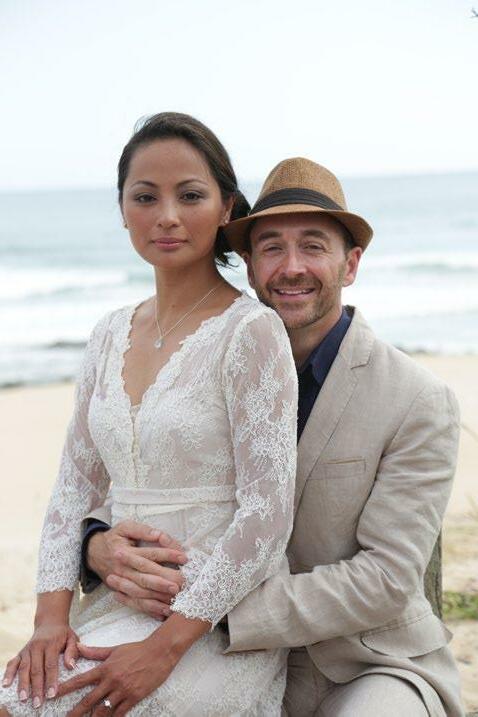
“It was for the best. Children needed a happy home to be happy. Ours wasn’t.”
Michelle initially planned to take her children back home to the Philippines but it proved complicated and difficult. “I decided to stay in South Africa because the children

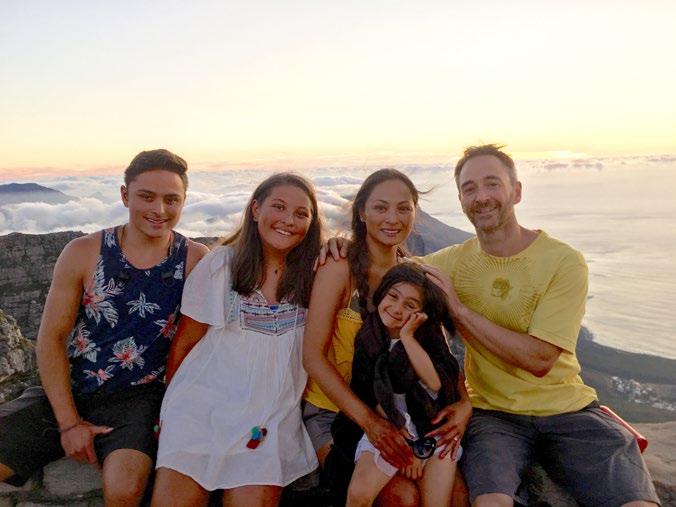
needed a father. They were so young. It was not easy for me to see them without a father. He was not a bad guy.”
The radical turn of events in Michelle’s life only made her more resilient as ever. With the help of her best friend, she tried her hand at selling Paul Mitchell salon products to retailers. It gave her financial stability for a year.
Her next concern was to find a job and get a work permit. In South Africa, one has to get a job offer first before applying for a work visa. And since the visa is employer-specific, one is only allowed to work for the South African employer who extended the job offer. Once the employee changes jobs, it will be back to step one.
Michelle landed a job as deputy COO of a BPO company and eventually got her work permit in 2010. She was in charge of operations. “It was difficult. A culture shock. There was racial tensions between the black and
for a long time and therefore not worth building a proper relationship with.”
Michelle made her husband choose between leaving Pretoria or moving out of South Africa. “I was in my 30s. I was looking for excitement. I needed people, I needed stimulation.”
In 2005, Michelle’s family packed their bags again and moved to Johannesburg where her second child was born.
Michelle immediately loved the energy of Johannesburg which is a lot more cosmopolitan than Pretoria. She also met a fellow Pinay who became her close friend. With like-minded people
white workers. Black South Africans were very wary of non-South Africans taking their jobs. They were suspicious of me because I´m Asian, an outsider.”
The tension between Michelle and the CEO started to build up at one point.
“It was hard to understand that I was the one being targeted. Our CEO wanted to get rid of me without pay. He conducted some sort of a mock trial in the office and had the people testify against me. These people were under me and they knew that I didn’t do anything wrong. It was theatrical. They did it because they had to keep their jobs. It was sad because
I thought there was camaraderie at work. I was stunned to hear them accuse me of being racist. Me? Racist? It was incomprehensible.” Michelle fought back and took the company to a labor court and won.
Finding her soulmate and staying Zen Michelle stayed focused. She took advantage of having a full time and reliable house help to allow her to do things for her self-growth. She finished a Masters Degree in European Literature at the University of Witwatersrand. She also trained to become a certified yoga teacher.

After her divorce, Michelle didn’t expect to give love another chance that soon. She met her future life partner, Edward Burke at a party.
Was it love at first sight? Michelle says yes, it was. “I attended an antiValentine´s party. Arriving at the restaurant, I passed a table where Edward was seated. There was a kind of recognition when I saw his face for the first time. It was as if my soul
recognized its twin. I moved on to find my friends. But this guy´s face stayed in my mind.” Michelle and “that guy” ended up seated at the same table. “We found common interests. I didn’t know it was going to lead to something.” Edward was based in the UK and was only in Johannesburg to visit his mom. He eventually stayed, and they got married in 2014. They have one daughter.
The following years found Michelle thriving and growing professionally. In 2017, Michelle created SA Models, her own modeling agency
that helps young models find their place in the industry. She also signed up with one of the leading talent agencies in Johannesburg doing a few SA TV series, a documentary film, a couple of HBO TV series and several commercials for big brands such as Samsung, Allan Gray and WHO. This year, she was part of the South African tourism global campaign as well as the Heineken
Edward together with Dustin, Kia and Io on a holiday in the Philippines.
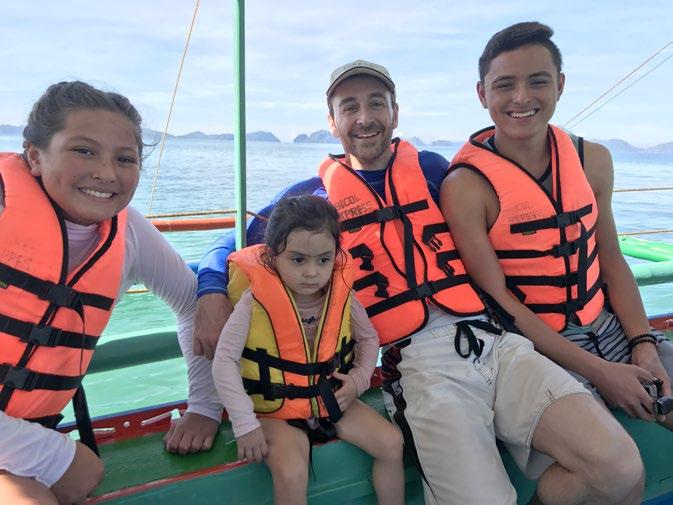
What should be the mindset when visiting/living in Johannesburg?
Be open and adventurous and have patience with the bureaucracy just like in the Philippines.
What part of the South African culture do you really like most?

Their “outdoor” culture. People in South Africa appreciate the great outdoors. They appreciate nature and the simple act of going out, taking walks are part of everyday life. South Africa taught me to love doing sports. I love walking my dog, running alone, swimming in the sea with my family, sports climbing with friends and teaching yoga to my students.
Would you recommend living in Johannesburg despite its reputation?
It is sad that Johannesburg has that reputation. It is one of the most vibrant, multicultural and beautiful cities in the world. I will definitely recommend this city to people who love great weather, diverse culture and amazing places. The violence that we hear of is usually confined in townships or the “squatter’s area”. I feel strongly about it because most of the violence is done against women.
What are your favorite places in Johannesburg?
Maboneng for the vibe, arts, culture, people. Munro Drive for the best view of the city. It also leads to Chinatown which is great for shopping and eating Asian cuisine. Linden or Parkhurst for dining and European-style shopping.
worldwide ad which was released last July.
In 2018 and 2020, she became part of Generations, The Legacy, one of South Africa’s longest running TV soap operas. She plays Mei Yang, a Chinese immigrant. She was the first ever Asian supporting cast in the popular series.

Whenever she can, Michelle finds time to participate in cultural and social activities organized by the Filipino association in Johannesburg. She set up the Filipino House of Commerce in South Africa, liaising with South African businessmen for the Philippines to bring products to South Africa.
“Living abroad has taught me many things. One of which is the importance of a community. I understand it better now that I am older. One needs people to learn from and share ideas with. A support structure is important for one´s mental well-being.”
Even if she has been away from the Philippines for 24 years now, Michelle has never forgotten her roots. She visits the Philippines once in a while to see her family and friends or attend social events like the Miss Asia Pacific coronation. Last year, she was supposed to do the TV series “Love You Stranger” with GMA7 but due to COVID-19, the filming was repeatedly postponed and she had to beg off.
But every time Michelle misses an opportunity, there is always something better that comes her way. In June of this year, Michelle flew again to the Philippines to star in the afternoon primetime drama Nakarehas na Puso alongside Jean Garcia and Leandro Baldemor. “I am excited to be back and doing what I love. With age, I have more experience to bring into my craft.”
As an actress, a model, a yoga teacher and an entrepreneur, Michelle wears a lot of hats. But she considers being a mother and wife her favorites. “My family keeps me grounded. My husband and I share the same values. We wake up in the morning, exercise, and then meditate together.”
Dustin, her 21-year old son is studying in Germany while her two girls, Kai and Io are living with her in Johannesburg. Though the kids consider South Africa their home, Michelle also sees her family living in the Philippines at some point. “It would be great for the children to know their roots. But we haven’t made concrete plans as of yet.”
Michelle believes that everything happens in its own time.
“That time, I had to go. I had to learn. I had to grow. Now, I have three wonderful kids, and one beautiful husband. That decision led to where I am right now and I am grateful.”
And to those asking where Michelle is now, she has been everywhere. She followed her heart, she chased her dream, she fell down
“Living abroad has taught me many things. One of which is the importance of a community. I understand it better now that I am older. One needs people to learn from and share ideas with. A support structure is important for one´s mental well-being.”
and bounced back, stronger and wiser. Standing like a true queen who never yields to be vanquished by her enemies.

















right in front of the entrance of a clothing store and a big supermarket, CEO Bubble Tea Bar seems to have found the perfect location for their food and drink kiosk in the Osdorp neighborhood of Amsterdam’s New West. There is a captured foot traffic of hungry and thirsty customers, especially on weekends when shoppers flock to Akerpoort Outlet Mall, and nearby outlet stores of giant brands such as Nike and G-Star Raw.
CEO Bubble Tea Bar is founded by Aniceto “Cet” Caacbay, a PMMA graduate and retired seaman who settled in Amsterdam in the 70’s. To gether with his sons Chris and Oliver, who both have decades of experience in operating multiple fast-service and festival catering businesses, they set-up the business following their names, Chris (and Cet) En Oliver.
According to Oliver Caacbay, their father, even at the age of 76, still dreams of having a family business where he can work together with his three sons. After his retirement from KLM, Cet was looking for ways to help Filipinos in Amsterdam, so he also set up a Balikbayan box services so Pinoys can send boxes to their rela tives in the Philippines.

In addition to bubble tea, an Asian drink that only became popular in the Netherlands in recent years, CEO Bubble Tea Bar also includes a changing street food menu, like lumpia, takoyaki, and pizza. They have also created a bubble tea party kit, which proved to be popular


among Dutch teenagers. To maximize the space they’re renting, a flower store called Bloom Club has been put up beside their kiosk.
The Caacbay brothers were born and raised in the Netherlands, but they would often go to Pampanga, their mother’s hometown, for the
holidays. Some of the highlights of their trips were going to the beach and navigating the chaotic city life in Manila. Oliver, second of the brood, associates these travels with good food especially street grub, and the and visits to Megamall, where food and beverage kiosks are a common sight. He would also spend hours leafing through issues of Entrepre neur magazine where the idea of starting his own business began to develop.
Together with his Dutch-Thai wife, they used to own multiple Thai Takeaways in Amsterdam and Am stelveen in 2004 until the business was sold.
After more than 10 years op erating, and earning more than a million euro in revenue at their top, the couple decided to spend more time with their young kids and their passions which is a flower and plant business.
Without prior experience in run ning a restaurant, he admits that he
CEO BUBBLE TEA BAR: BRINGING THE PINOY FOOD KIOSK TO DUTCH CONSUMERS
A Dutch entrepreneur encourages Filipinos to start their own business in Europe through a ready-to-start bubble tea and food kiosk.
had to discover the pitfalls of manag ing a business on his own and wished he had someone who could have shown him the ropes.
“I had always dreamt of having my own business. When I was study ing marketing and communication in college, that was when things became more professional, when I had to present and make a case study about it. That was the turning point for me. Sometimes you just have to take a leap of faith. It’s almost so typical but it’s so true. It’s like jumping off
an airplane and trying to fix your parachute,” says Oliver.
Despite the uncertainty of starting a food business during the pandemic, Oliver and his brothers decided to jump the gun and open CEO Bubble Tea Bar in 2020. The idea is simple, a food kiosk with low overhead costs, affordable capital with maximum profit. It was inspired by the food franchising business that Oliver used to see back in the Philip pines.


Oliver considers the pandemic a blessing in disguise as they were able to acquire a space in a very good location, which would not have been available otherwise if businesses weren’t closing down.
Learning from his last food ven ture, Oliver now uses platforms like Deliveroo and UberEats for food de livery instead of having an in-house delivery crew. They also utilize the power of social media, using TikTok and Instagram to reach a new genera tion of food consumers.
Franchising is one of the most popular business models in the Philippines. Philippine fast food giant Jollibee is one of franchising success
Business name: CEO Bubble Tea Bar
Location: Ookmeerweg 404, 1069 CG Amsterdam Website: www.www.ceobar.nl
Industry: Food Initial Investment: €1,000 (starters kit) €20,000 (food truck) €50k - €100k (shop)
Recurring expenses: Depending on the pack age, rent, to permits. Staff and electricity costs are biggest expenses
Expected ROI: Depending on time and strategy, easily within one year.
“My favorite line from the movie
Pursuit of Happyness is “Don’t let anybody tell you you can’t do something, you got a dream? You got to protect it. People who can’t do something themselves, they want to tell you you can’t do it. If you want something, go GET it, period.”
stories, which was able to export its franchises all the way to Europe and North America.
According to the Philippine Franchise Associa tion, there were about 200,000 franchise outlets in the Philippines prior to the pandemic, covering 2,000 domestic and foreign brands, from food and retail to consumer services. Although this number had significantly gone down due to Covid-19, PFA expects that this number will increase to 250,000
by 2025. In 2018 alone, the rev enue generated from the franchis ing sector reached $25 billion according to PFA’s data.
“Bubble tea is booming in Europe. I want to assist Filipinos with the tools, and advice that could make their dreams of owning a business a reality, without the need to reinvent the wheel or make costly mistakes. I want to encour age them to make a name for themselves.”
Oliver wants to replicate this business model in the Netherlands, to encourage individuals who do not have a big capital to start their own business. With CEO Bubble Tea Bar, he wants to present an accessible business opportunity flexible enough to accommodate the target consumers.

“We’re aiming for a turnkey business and a sustainable coopera tion. Depending on the budget of the potential franchisee, an initial investment between €10-€50k is needed. We have different kinds of offerings, whether they want to start with a location or if they want to start from home. We provide the equipment, software, and every thing you need to start. We also do the staff training and the negotia
tions to make sure you get the best deal on a location you’re eyeing.
The franchisee pays a percentage of the revenue from the business. The profit margin in a bubble tea bar is about 70%,” he explains.
However, Oliver admits that location is perhaps the most impor tant factor in determining whether your food kiosk business will be successful. For busier locations like in the center of Amsterdam, the rent can easily go as high as €5,000. Additionally, being on top of the cash flow and finding dedi cated and reliable staff will also affect the outcome of your business venture. But he believes that as an entrepreneur, you have to have big goals. For CEO Bubble Tea Bar, Oli ver aims to have fifty units within three years.
“If you compare it to the Philippines, you’re talking about hundreds of franchise units spread across the country. I believe that when the bases and structure are good, and people are earning, it will just spread like wildfire.”
For more information on the franchising opportunities with CEO Bubble Tea Bar, visit their website www.bobapopup.com or email oliver@ceobar.nl.


“Sometimes you just have to take a leap of faith. It’s almost so typical but it’s so true. It’s like jumping off an airplane and trying to fix your parachute.”CEO Bubble Tea owners combined their flower shop in the same location to maximize the rented space.



Life is full of penalties. If you do not pay your tax due on time, you pay a penalty. If you do not file your tax return on time, you pay a penalty. If you pay your mortgage late, you pay a penalty. If you miss a credit card payment, you pay a penalty. A penalty is essentially a punishment for breaking a law, rule, or contract.
According to US Internal Revenue Service (IRS) here are some penalties:
• Information Return applies to taxpayers who do not file or furnish their required information return or payee statement correctly by the due date.

• Failure to File applies when you do not file your tax return by the due date.
• Failure to Pay applies when you do not pay the tax you owe by the due date.
• Accuracy-Related applies when you do not claim all your income or when you claim deductions or credits for which you do not qualify.
• Erroneous Claim for Refund or Credit Penalty applies when you submit a claim for refund or credit of income tax for an excessive amount and reasonable cause does not apply.
•Failure to Deposit applies when you do not pay employment taxes accurately or on time.
• Tax Preparer Penalties apply to tax return preparers who engage in misconduct.

• Dishonored Checks applies when your bank does not honor your check or other form of payment.
• Underpayment of Estimated Tax by Corporations applies when you do not pay estimated tax accurately or on time for a corporation.
• Underpayment of Estimated Tax by Individuals applies when you do not pay estimated tax accurately or on time as an individual.
• International Information Reporting applies to certain taxpayers who fail to timely and correctly report foreign sourced financial activity.
How do you avoid a penalty?
The best way to avoid any penalties is to calendar due dates. Give yourself ample time to complete a deadline and pay taxes or file your tax return. Penalty is unnecessary and can be avoided but it takes discipline and proper planning to prevent them from occurring. If you cannot file your tax return by the original due date, make sure to file an extension. Doing so will prevent late filing penalty BUT any tax due needs to be paid by the original tax deadline. Generally it is every March 15th for S Corps and Partnerships and April 15th for individuals and C Corps. Otherwise, one interest and penalties are assessed.
Sometimes, you can get lucky if you call your credit card company or lender to waive or forgive assessed penalties. The same type of penalty waiver exists with the IRS, it is called a first time penalty abatement for those taxpayers who have good standing with the IRS in terms of timely filing of tax returns and timely payment of tax due. First time penalty abatement letter is submitted by the taxpayer and or the accountant on behalf of the taxpayer.
Some penalties can also be removed if the taxpayer acts in good faith and can show why the taxpayer
was not able to comply with the filing rules and fulfill his or her tax obligations. The IRS, by law, will not remove any interest unless the penalty is removed completely or reduced. Please visit the IRS website on penalty relief: irs.gov/payments/ penalty-relief.
There are times when a taxpayer disagrees with the penalty that is assessed, it is certainly ok to dispute them. Call the IRS on the number that is on your IRS notice and provide the reason why you feel the penalty is unfair or is incorrect when you request for a removal. Sometimes, the penalty can be removed during the call. Sometimes you must file for penalty relief in writing and the IRS agent will guide you on what form to fill out and send. It is usually the Form 843, Claim for Refund and Request for Abatement. If your penalty abatement request is denied, you can go through the penalty appeal process.
Yes life can be full of penalties, but we have the capability to prevent, avoid or dispute these penalties. Bottomline is, prevention is better than cure. Prevent penalties by being organized and by being on top of your tax filing and tax payment obligations. You can sleep better at night too.

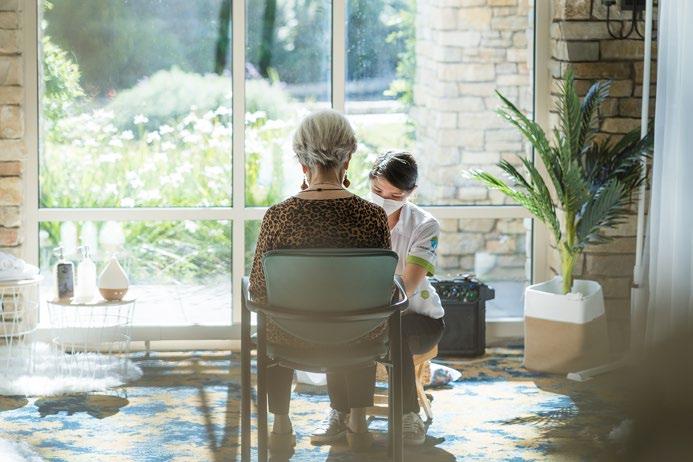
A caregiver makes it his mission to change the way America takes care of its old people

RaymondVillaroman beams as he tells me about *Lea, one of his patients who is suffering from dementia.
The first time they met, Lea owned a big collection of black shoes, unidentifiable from one another. Raymond and his team had to reduce her shoes to a pair of black and a pair of pink so that she wouldn’t be confused when putting them on. Now Lea prefers to put on her pink shoes.
For Raymond, owner and CEO of Geriatic Care Solution (GCS), a California-based company special izing in providing high quality elderly home care, preparing a senior person’s environment to allow them a certain degree of independence is one way of respecting their client despite their cognitive condition. This follows the principles of Montessori-Based Dementia Programming, the method of care that GCS subscribes to. Ray mond is a firm believer in preserving the dignity of life for people suffering from cognitive impairment.
Raymond also talked about Lea’s crucifixes, hinting that his client is a devout Catholic, a subject they can talk about for hours for he also went to a Catholic school. Lea still asks his name several times a day and
demands to know what he is doing in her house.
“When it comes to people with Alzheimer's, their long term memory doesn't disappear, it’s usually the short term memories that they easily forget. For them, engagement is very important. If I did not have a purpose and I was only in this business to earn money, I would have become impatient,” he says during our Zoom interview from his sunny house in San Francisco.
Raymond came from a family with very modest means. When his fa ther died when he was 12, his mother took over the herculean task of raising four children. He remembers his mother regularly borrowing from relatives to support their education.
His grandmother adopted three of his siblings to send them to school.
He wanted to be an archi tect but money was an issue. His mother egged him to take up nursing instead so that “he can go abroad,” preferably the USA. After finishing his nurs ing degree at the Wesleyan
University College of Nursing and Allied Medical Sciences in Nueva Ecija, Raymond left the Philippines in 1990 to work as a nurse in Daly City, California. But in a matter of months, he was overwhelmed by homesick ness.
“When homesickness struck me, it was very, very difficult. I
principle I had studied just to get my working papers could be applied to dementia. When I opened that window of opportunity in my life, I felt in my heart that this should be the core of my company, this would be my specialization.” Ray mond took several training to be a licensed practitioner on Montessori for Dementia.
By employing the MontessoriBased Dementia programming, Raymond slowly geared towards caring for old people with dementia and Alzheimer’s disease. At GCS, they assessed the cognitive stage of their clients and personalized the care approach. They allow their clients to retain independence, by making sure their environment is safe and practical for ease of move ment, even when it comes to small things like being able to wash and feed themselves with the help of their carer. But most of all, he tries to inculcate compassion and integ rity in what they do. His staff are well trained to anticipate responsive behaviors from patients so that they
was always crying, even while pushing a medicine cart at the hospital. I didn’t tell my siblings because they wouldn’t understand anyway. What could they do while they were far away?”
When the company that petitioned him got embroiled in a visa problem, he packed his bags and went home, never to return. But apparently, he was destined for a life in the US. In 2005, finally recovered from his previous experience, he was presented with another opportunity to go back. This time he was not afraid anymore.
Raymond was on a student visa that allowed him to study and work at the same time. While finishing his training on Early Childhood at Montes sori Teacher Education Centre in San Francisco Bay Area, he was juggling several jobs to get by, including serv ing at restaurants and caregiving for older people. It was in the latter that he found a much bigger purpose.
Caregiving became Raymond’s career. After all, money was easy. He finally decided to set up his own com pany in 2012 and would earn $5,000 from one client. But five years into his business, he started questioning what he was doing.

“In the beginning I only wanted to do it because of good money. But I came to a point where I didn’t want to go to work anymore. Even the slight est problem with clients would stress me out. I felt like there was something lacking. What I did not realize was that the answer was already in front of me. And when I changed the way I did business, it totally changed me as well, even in my personal life,” he relates.
Raymond was talking about his company’s approach on senior home care. From a traditional method, he switched to using the Montes sori Method, an educational system pioneered by Italian physician Dr. Maria Montessori, which emphasizes on allowing children independence in a prepared environment for optimal development.
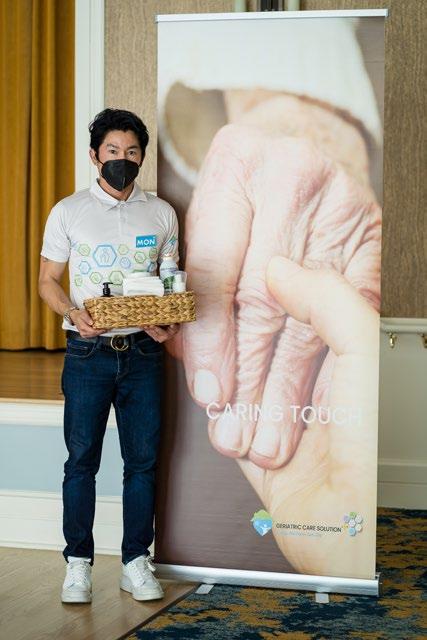
In elderly care, Dr. Cameron Camp, an American psychologist and director of research and development at the Center for Applied Research in Dementia, adapted and retooled the Montessori Method for people with Alzheimer's, resulting in a method called Montessori-Based Dementia Programming. Dr. Camp believes that people living with Alzheimer’s can still contribute to their families, friends, and community members.
“I didn’t realize that the same
“I didn’t realize that the same principle I had studied just to get my working papers could be applied to dementia. When I opened that window of opportunity in my life, I felt in my heart that this should be the core of my company, this would be my specialization.”Raymond Villaromanis in his element at the Geriatric Care Solution office in San Francisco.
can act accordingly.
“Here in America, people with dementia are usually associated with bad behavior. But their behavior is a response to a stimulus, and their re sponse to it is determined by the way they know how to respond, like with children. They cannot articulate the words, so sometimes they shout. As a care provider, you have to find what they want to articulate but cannot say. Once you understand that, it's going to be easier. For you to understand where they are coming from, you have to understand their needs. To be able to do that, you have to know who they are,” Raymond explains.
Raymond emphasized the im portance of family support in caring for the elderly by encouraging the children and relatives of his patients to get involved in the decision-making process and participate in the dynam ics of care.
He also attributes Filipinos' innate sense of responsibility in caring for aging relatives as one of the fac tors of his success. Coupled with his company's core values, he thinks it is a perfect combination.
“I always tell my staff that even when the children of our patients have different wishes, they have to remind themselves that our core purpose is to take care of their loved ones. So if ever there’s a conflict, we try to educate the children about the best approach for their parents’ care. And they under stand because they know that we are all coming from a good place, from a place of love. And if you know your purpose, and you put the patient on top of your priority list, whatever you do, you’ll never go wrong.”

6,5 million people above the age of 65 years old are living with Al zheimer’s. This figure is expected to increase to 13,5 million in 2060 while there is already a decline in the num ber of caregivers in the last decade, recently exacerbated by Covid-19.
“I want to change the culture of aging, dementia and dying in the USA. I want them to have a good experience about dementia care. Here in the US, even in the Philip pines, once a member of the family gets sick, everyone is affected. How are you going to prepare them to be ready for that?”
Aside from their regular services, like personal care, meal preparation, medicine reminders, light housekeep ing and companionship, GCS offers a free care mentorship program where they educate people about the dis ability process of Alzheimer's patients.


Raymond believes that when more people understand this disability, the more that they can develop compas sion for people suffering from it.
To help prepare society for senior care, Raymond is writing a children’s
book about dementia. It is inspired by the story of a lady she met at a com munity care home who told him how her dementing grandmother became scared after seeing her granddaughter for the first time after so many years.
“The concept is to teach families (about dementia), because even the kids question what is going on with their grandparents. It has to be an experience within the family, that it's ok, that it happens. Because these ex periences will mold these children on what kind of person they will be in the future. I want to be able to reach out to these kids , in a way that they will understand dementia. If you can help even one person, that’s an achieve ment already.”
Raymond plans to bring GCS to other American States, and hopefully to Canada and Europe. He is already processing his freelance license and business models towards this future plan.
He also dreams of becoming a global educator on elderly care particularly those with dementia and Alzheimer’s. He hopes to create an even bigger impact for the aging population who tends to be forgotten by society at the twilight of their lives.
*name had been changed due to privacy
“I always tell my staff that even when the children of our patients have different wishes, they have to remind themselves that our core purpose is to take care of their loved ones.’’Raymond Villaroman with the GCS team.


















































































































































































































Iwaswalking in the outskirts of Leon, minding my own business, all jolly and without a care in the world. Little did I know that it would be my first time to experience racial discrimination in my first year in Spain, my first outside the Philippines. I was in my early twenties and at that time, why would I be conscious of these “sorts of things”? To that young and naïve version of me, the world was a rose-petaled stroll.
A car passed by and there were these two local boys smiling at me. I thought they were being friendly. At that time, I really stood out in this small city. How many brown guys could there be in this place? Most stares I got there were usually out of curiosity or wonder. The locals should be used to foreigners; after all, Leon es un destino universitario. The car slowed down and the passengers called out to me and said “Chino, chino de mierda…. ¡púdrete!” (Rot in hell, chink!) These words were masked with their smiles and again, I thought, they were just horsing around. And they sped away in their car.
I would meet my Spanish friend Alfonso later on and I would mention this casually, like “Yeah, can you believe that? So funny, no?” and his reaction was to look away and say, “Man, those things never happen to me!” And no, it wasn’t funny.
Through the years, I would recall similar situations, some in León and
some in Madrid. I vividly remember that weekend in León when you could still smoke indoors. I was with my non-smoking friends and classmates and I fancied a bit of cigarette and I saw this woman who was having a drag of her own. I went to her and asked for a ziggy. She looked at me and sternly said “No. (Followed by a short yet dragging pause) Lo siento pero soy asquerosamente franca.” (I'm sorry but I'm disgustingly frank.) I was taken aback. She could’ve easily said no.
I was too surprised to even process the situation and I remember that I only said “vale” and turned back to my friends again. Was that woman just high? Or drunk? Or was she just plainly disgusting (as she described herself to be). My question is, would she have said the same thing if I were black? Or Spanish? Or a fellow woman? Or if I were Brad Pitt? These are questions that now, I don’t want to even process in my head, now that I’ve been here a while and more
exposed to Western culture.
You would never know that you are being discriminated upon unless you learned more about the culture of the place that you are living in. It took years to process this idea and arrive at this conclusion. I guess it is because I believe in the niceness of people.
But receiving a discriminatory attack actively or passively can backfire unpleasantly. It can make you an angry or bitter foreigner and I don’t want that to be my case. It is a fault to ignore it. I used to be so slow in getting the hints of racial slurs. I realized that the reason why I get served take out coffee almost immediately was actually to get rid of me first (?).

I deliberately leave this question mark sign because that’s what it is: it leaves you still questioning things even after the years have passed.

I remember very, very well; “Yeah, white is better.
But Filipinos make very good waiters.” We would work together for the next three months after that. And the version of myself at that time, wouldn’t realize that those labor banters that seem to be innocent are actually, racial discrimination.
I thought I was special, but then I realized in time, what reverse discrimination was. It was one of those fancy m’as-tu-vu places.
One day, I decided I had extra time to sit down and have my cup quietly but the usual instant service didn’t materialize. The workers there were ignoring me! I work in the hospitality industry as well! It was unacceptable and then it dawned on me; I looked around and suddenly felt out of place.
I had an Australian co-worker in Ibiza. I worked there for two summers and I remember her commenting about my hands. Just a simple and seemingly innocent comment. “Oh, how small they are!” She raised her hand and our palms touched and made the comparison. I think she mentioned or suggested something like: with her bigger hands and taller stature; she would be a better worker than I was. And then, she concluded, and this, I remember very, very well; “Yeah, white is better. But Filipinos make very good waiters.” We would work together for the next three months after that. And the version of myself at that time, wouldn’t realize that those labor banters that seem to be innocent are actually, racial discrimination.


We are all exposed to these kinds of situations, after all, everything starts on the surface and we know what our surfaces look like. The dangerous thing that happened
“I’m from the Philippines.”: This telephone conversation would be followed by a long breathy pause on the other line and the words “Uff, lo siento. I can’t rent you the room.”
after being exposed to these kinds of situations for me and then being aware of it was that I, too, started to indirectly discriminate. I started to grow a certain dislike for my features. I started to feel inferior and created these levels of inferiority and started categorizing some people; who are less, lesser and worse. I pluralized people: I believed all Aussies are like that. I tried to compensate by exerting an extra effort to stand out and be better. BUT FOR THE ERRONEOUS REASONS.
I felt like I couldn’t make a mistake. People will think all Pinoys are like me and that I had this savior mission to give us all a good image. “You have to behave, otherwise everyone would think that lahat ng Pinoy ay ganyan.” My motivations to be a better Pinoy expat were faulty because one way or the other, some people will still think less of us no matter what. I really worked my way out to dominate the language.
Having an accent is one thing but conjugating your verbs incorrectly or declining the nouns wrong gives you away and you become another foreigner, a target for questions like “¿De dónde eres? (Where are you from?) and you tell them “I’m from the Philippines.”: This telephone conversation would be followed by a long breathy pause on the other line and the words “Uff, lo siento. I can’t rent you the room.”
These are things that you can’t control. Some people have not seen the world. Some people have worlds that are small. And we, aliens to these small worlds, are dayo, displaced and more informed and should know better. But I am finding a very hard time to end this article without sounding like I have the answer. I DON’T. Be warned, dear reader. I don’t provide the answers. But what I can share is that I’ve lessened the futile grip to that idealized desire to
be a good Pinoy abroad. I do things for myself and I pour my respect to myself. I may be very brown but I now wear that brown so well.
I remember attending a Masterclass in SAE three years ago. There was an Italian DJ who was invited to talk about his work and I am always fascinated by the creative processes of other artists. During the Q&A part, I cheesily asked him about what advice he could give to an Asian in Barcelona who wanted to make his way around the world. I would mention how hard it had been for me to get ahead. And he said, “Have you seen that Dom something-something movie with Jude Law? What you don’t have is actually what you have. Being Asian in Barcelona is actually the thing that is going to help you get ahead. Use that.”
Yeah, pour that respect to yourself. Lately, I would hear comments like “You, Filipinos are so nice and smart... and hard-working.” I will comment, “No, I am nice and smart and hard-working. Not all Filipinos are or can be like me. There are Filipinos who are rude, and stupid and lazy and in any combination as there are nice women, racist women, racist Aussies, non-racist Aussies, some intelligent Arabs and non-intelligent Arabs, pleasant and unpleasant homosexuals, rude and polite old people, etc.”
At times, polite people can be having a hard time and suddenly become rude. I, too, can lash out and be crass. But never reduce us or those people into that one single moment. It is not fair. That is the true discrimination: the reduction of people into that one moment that their paths cross with yours. Keep that respect. So far, it is the better option for me because I realized that internalized self-respect, in time, is cleansing and eventually would externalize. But from time to time, I always ask myself “Who do you represent?”
Having an accent is one thing but conjugating your verbs incorrectly or declining the nouns wrong gives you away and you become another foreigner, a target for questions like “¿De dónde eres? (Where are you from?) and you tell them

Youhaven’t changed; one would say in English. Someone who hasn’t changed could either be good or bad: the person could be on the heavier side then and even more now, or the imperfections did not improve over the years. If the individual is lucky to be endowed with youthful genes, or cosmetic interventions are almost unde tectable, not having changed is a compliment. Otherwise it’s a slight on the person’s confidence and selfesteem.
Filipinos have a more sensory ap proach to visual description when giving a compliment. Walang kupas. Haven’t faded. In a handwoven fabric or painting or photograph, the colors and brightness have remained the same over the years despite frequent washing, exposure to the elements or non-exposure from storage. A walang-kupas face (and body) has defied gravity and withstood the harshness of time. Like a starched fabric soaked in a mixture of Liwayway Gawgaw and water, there’s a firmness, tautness and freshness that project a youthful appearance. In an ageist culture and society, youthfulness is beauty.
My first encounter with the concept of beauty was when I saw Lynda Carter on TV as Wonder Woman. Her voluminous brunette hair, blue eyes and slender lips were a stark contrast to my dark straight hair, dark brown eyes and full lips. I was mesmerized by the aspirational colonial beauty standards aggressively planted in the head of a morena like myself. My grandmother used to scrub my body with pumice hoping to descale my brown coat. No, it wasn’t child abuse; it was optimism that somewhere between my dermal layers was my lighter-skinned version. I thought
Ms. Carter’s beauty was even more unat tainable as she was fairer and undiluted compared to the local mestizas. Later, I found out she’s of Mexican-Spanish-French mix (mother’s side) and English-ScottishIrish (father’s side) which make her a multi-racial mestiza. As a consolation for not being a mestiza, I grew up to an above average height of five foot six inches, with a high forehead and cheekbones, wide eyes, a narrow nose and a skin tone of kayumangging kaligatan that Caucasians would roast themselves for. I have been told that my features are that of a quintes sential Filipina. But am I considered a beauty? Goaded by some friends from the publishing business, I not-so-confidently joined a beauty pageant to find out.
Filipinos’ lofty beauty standards are somehow the equivalent of a digitally enhanced flawlessness. A Filipino woman’s underarms, elbows, feet, knees, gluteal crease (kuyukot) and groin must NOT be dark or should be at least nearly the same color as the surrounding skin. Spare a thought for those with dark gums. If nature hasn’t been kind and generous, there’s rhinoplasty, veneers and glutathione. The idealistic sense of beauty is placed on a pedestal, almost uncompromising, unfor giving and rigid. I grimace when I read about Filipino celebrities bashed by the public for having a dark singit when wear ing a swimsuit or a funeraria-look makeup. Such nitpickers. A throng of eagle-eyed fault finders.

Perhaps this gravitation towards sub lime physical attractiveness is the reason the young women sent to represent the Philippines to Alpha pageants (meaning Miss Universe, World, International and Earth—a term I recently learned from a friend who’s a beauty pageant cognoscenti) have the sash factor. It is, I’ve been told by the same friend, the edge of a country’s
representative over others’ when that particular country’s delegates consistently place in the top five year on year. The Philippines is now in the same league as Colombia, Venezuela and the USA, whose candidates never fail to secure a spot in the finals. While a sash factor is not the preserve of the mestiza, the Philippine representatives are generally of mixed ethnicities.
As for me and my reluctant attempt to clinch a highly coveted crown, I sadly didn’t convince the judges at national level that I was a beauty—not that I have to convince anyone, but that’s the point of a beauty contest. Needless to say, I didn’t have that mystical “sash factor”.
Over the years my perception of beauty has evolved: I appreciate diversity, differences, imperfections and individu ality more than ever. I believe (no pun intended) that beauty pageants hold an unprogressive view of beauty, making a brutal, albeit entertaining, spectacle of pitting women against each other in a bid to find out who the fairest is. But in the Philippines, it serves its purpose to divert the audience’s attention from the ugly and somber aspects of life, and propel the win ners to a recognition that can help them in their careers. Filipinos’ obsession with high standards of physical beauty and parading them in pageantry is embedded in Philip pine culture that it has become part of our identity. That is an element in our colorful cultural canvas that is certainly walang kupas.

Working in inter national schools has taken my family to exciting places in and out of the Philip pines. When my 2-year contract in Dhaka, Bangladesh ended, I was offered to teach in an international school in Khar toum, Sudan. Initially, I was a bit hesitant about moving to a country known for its swelter ing heat and for tearing down Christian churches.
As most schools only allow two dependents, having three dependents left me with limited options. Gladly, the offer was given to include schol arships and all other benefits (flights, international insurance, local living allowance) to my three kids (then aged 5, 12 & 15). I was also able to connect with Filipinos in Khartoum and they assured me that Sudan is not as bad as it looks in the media.
When we arrived in this North eastern African country in August 2018, I felt transported back to the 80’s. Khartoum looked like the

Philippines four decades ago. It is backward in terms of infrastructures, and Khartoum city is sparsely popu lated. Having lived in the Philippines and Bangladesh, it was a relief to see a country without so many people, where cars drive on wide roads. Grid locks only happen when a stoplight is broken.
The school rented a spacious 3-storey apartment to be our home for the rest of our stay and provided us with a car to help us move around.
My workplace is a huge facility that includes the school, a swimming pool, gym and access to a golf course, horseback riding and more.
I teach science to grades 6, 9, and Diploma Chemistry to grades 11 and 12. Our students are mostly Su danese, Europeans, Tunisians, Iraqis and Pakistanis. The school also boasts of a diverse group of teachers. There are six of us Filipino teachers in the school. The environment is gener ally pleasant and the parents, mostly expats, are nice and supportive of the teachers.
Outside the school grounds however is where reality reveals its true face. Sudan’s tumultuous history plays a significant role in the coun try's political situation. Sudan has been plagued with three bloody civil wars that lasted years. Just months after we arrived, demonstrations against the 30-year rule of President Omar al-Bashir began, which resulted in his ouster months later. The whole
By Karen Mae Medallacountry was put on lockdown and we were just given a 2-hour notice to pack our bags and go back to the Philippines on a special evacuation flight and waited it out until things went back to normal.

Because of long years of oppres sion, it seems to me that the value of life in Sudan is very low. At the height of the Covid-19 pandemic, the locals were not wearing masks. They were even laughing at us for wearing masks. Witnessing deaths is normal to them. People get killed by the police, military, diseases, and for the world to stop because of an illness didn't make sense to them. This is how one of our house guards described to me why Covid-19 didn’t seem to bother them at all.
Fatalism is a common attitude. If you die, you die.

Surprisingly safe Khartoum is boiling hot. And dusty. It is like living close to an oven exhaust. The weather can go up as high as 49 degrees. My kids and I have learned to adapt to the heat. We actually find Sudan’s heat much more pleasant than the Philippines.
Sudan is one of the poorest countries in the world. Its 19.6% unemployment rate is attributed to the government's lack of stability and poor economic strategy. For an expat, Sudan is cheap. The cost of living is around $650 monthly. There are not many malls in the capital. The two popular ones, Al Waha and Afra malls
pale in comparison to the giant malls we have back home.
My friends are always surprised every time I tell them that Khartoum is safe. I never felt unsafe here until lately. Because of hyperinflation, petty crimes have gone up. But compared to my time in Dhaka, which was right after the terrorist attack on 2 July 2016, Sudan is relatively safer. Of course, there are some areas outside Khartoum, especially the east and south of the country, that are consid ered dangerous for expats.
When locals see me in the street, they greet me with “Ni hao” mistak ing me for a Chinese. People are not used to seeing foreigners but they are not rude. I learned some conversa tional Arabic, the main language in Sudan, and see to it that I use Arabic numbers when buying in the market.
Sudanese are beautiful and gentle
people. If there is an altercation in the streets, violence is out of the pic ture. In school, I have made lifetime friendships with some of our Suda nese teachers and staff. They always make new teachers and students feel welcome, and they are very helpful in showing us around the city or places to go. Despite being a predominantly Arab country, I don't cover my head when I go out of the house, but I also don't wear shorts to show respect to their conservative culture.
There are not a lot of cultural activities in Sudan. At school, we hold Sudan week where we celebrate their culture: dance, music, arts and crafts, local products, and taste Sudanese traditional meals. The meal is shared within the family, and during Sudan week, around ten people would share a big plate with falafel, Arabic bread and a variety of meat dishes, eating

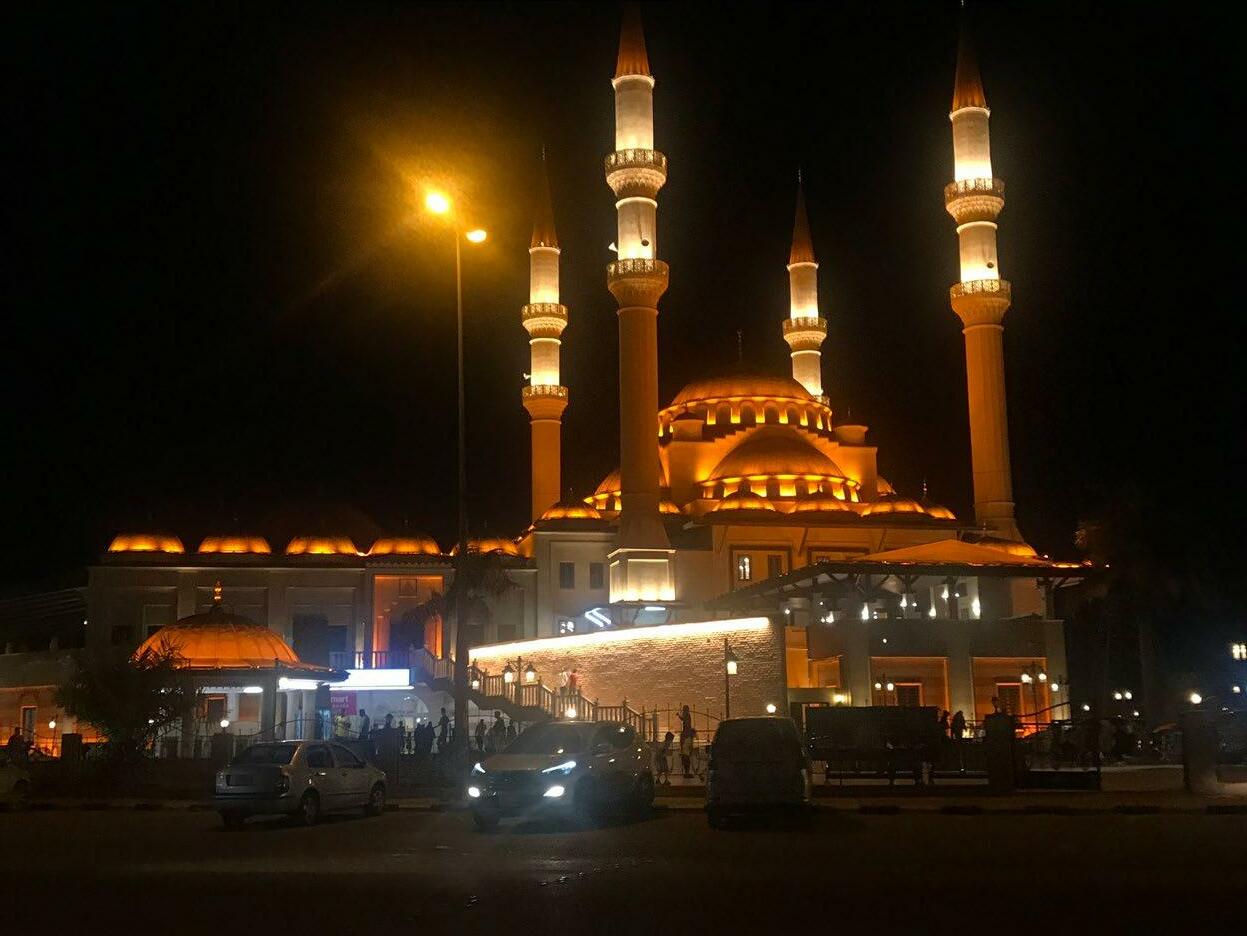
Witnessing deaths is nor mal to them. People get killed by the police, military, diseases, and for the world to stop because of an illness didn’t make sense to them.
together with their hands. It is their version of our boodle fight. My favor ite Sudanese food is falafel. I like their lentils and their salads too. Foul (fava) beans are a staple. Sudanese food is delicious and the portions are big.
Going to grocery shops always re minds me that we are far from Asia. Most products are unfamiliar, there are no Filipino staples like rice, soy sauce, fish sauce. There are certain stores that sell these products but supply can be erratic.
There are around 300 Filipinos in Sudan working as teachers, manag ers, mechanics, and domestic help employed by other expats. Some of them plant and sell vegetables, and some even discreetly slaughter pigs in their backyard. There is also a pig farm in Sudan owned by a Syrian.
One will also be surprised to know that there is a “sabungan” hidden somewhere in the city.
Filipinos in Sudan are under the Philippine embassy in Egypt. There is an honorary consulate office in
Khartoum but the embassy performs consulate services twice a year, in March and November. When I was new here, I wondered why there were no Pinoy organizations in the Filipino community. I was told that there were efforts before but that didn't work out. I hope in the future there will be at least one because it is always good to know that you have your kababayans who have your back. When I got Covid-19, I experi enced the unique care of my Filipino friends, bringing us water, medicines and groceries.

Despite being a largely muslim country and the occasional crack downs on the Christian church, 5.4% Christians can still practice their faith. There are Catholic and Coptic Christian churches in Sudan, but we go to an evangelical church with Fili pino pastors. The church is registered and recognized. Services are held in a rented house so we make sure we soundproof the walls well so that we don’t disturb the neighbors.
At Christmas, we put up Christmas trees and decorations and sometimes organize Christmas parties. We make our homes festive because we don’t feel the Christmas spirit outside.
My life in Sudan has been an eye-opener. I have learned that the value of life differs in every country. That governments can make a strong impact on the lives of their citizens. I want my children to be grounded, to always have this sense of empathy towards the less fortunate.
Living abroad takes a lot of open-mindedness and patience. Rac ism is rife wherever we go. You’d be surprised to find out that Filipinos can be very racist too. At school, there are some teachers which carry the “white superiority” attitude. Of tentimes, they are the ones who have just left their countries to work inter nationally; those who have limited international exposure. As Filipinos, we have to work doubly hard to get recognition. And I have accepted this as a challenge.
KHARTOUM,My life in Sudan has been an eyeopener. I have learned that the value of life differs in every country. That governments can make a strong impact on the lives of their citizens.

The Balkans was my first international trip after the lockdowns. It was invigorating, like diving into the ocean on a blistering day and coming back up slightly out of breath. My cousin and travel buddy Gyah, and I used to meticulously plan our holidays, ticking off a bucket list of must-see sights as much as we could. But this getaway was different, we wanted it to be relaxed and immersive so we could crawl under the skin of each city.
By XXX
Andi, our tour expert and trail leader, picked us up from the airport in Tirana, Albania. He knows the Balkans by heart and has an answer to every question.
Tirana was swimming in the middle of spring when we arrived. Cherry blossoms were in full bloom and the sky was painted with pastel colors. It had a great café scene that even non-coffeeholics would adore, and its laid-back vibes intertwined with a lively nightlife.

Eager to seize the day, my cousin and I just dropped off our luggage at the hotel and then headed out to Dajti Express Cable Car Station. The 15-minute ride that to took us all the way up the mountain top was remarkable, it felt like nature had swallowed us whole, hiding us in its belly.
At the top of the mountain was an adventure park, a mini-golf course, and a cliff-top restaurant, all waiting for us to enjoy. Gyah and I went horseback riding, slowly savoring Dajti’s beautiful scenery. Tranquility engulfed me as we bade Tirana goodbye. It was time for us to move to the Northern part of Albania.
It was freezing cold when we got out of the car but Valbona instantly warmed our hearts. While Tirana was bursting with delicate colors, Valbona looked divine, coated in glistening white, blanketed by sparkling swords of ice.


Surrounded by Accursed Mountains, otherwise known as the Albanian Alps, and a stone’s throw away from three national parks, the location of Jezerca Guesthouse was poetically beautiful. Our hosts welcomed us in a warm and cozy cabin so that we could rest after a long drive along a winding mountain road.
After a refreshing nap, we enjoyed the welcome feast prepared by our hosts. Everything was delicious, prompting me to eat too much and forgetting about our scheduled trek to Xhema’s Lake. My body wasn’t trained for hiking, but I yielded to my cousin´s request to go snow trekking for the very first time
in our lives.
Andi curated our two-day hike. He also made us hiking sticks from branches laying on the snowy ground. It started out easy, but when we reached the trail’s steep inclines and rocky drop-offs, it became very challenging.
I almost gave up when my leg got stuck in the heavy snow. “Is this your definition of an easy hike?,” I asked Andi. “We haven’t even started the real hike yet,” was his reply.
Taking smaller steps was an effective strategy and thoughts about food diverted my attention away from physical exhaustion. I was slowly getting the hang of it when I saw the sunlight hit the snow, a beautiful reminder that even the coldest has the potential to glow.
After what seemed like an eternity, the lake finally revealed itself, the view was definitely worth the climb. All the slips, trips, and falls that I suffered didn’t matter anymore. The lake looked peaceful, drawing me into a trance-like state of comfort and trust. Nature really has its way of touching one’s heart, mind, body, and soul.
The next day, my cousin and I
woke up very early to savor Valbona’s beauty on our own. I went outside in my pajamas, allowing the cold to take me in its arms. I sat on a chair and examined the grandeur of the snowy mountain towering like a king from a distance. Overwhelmed with joy, I closed my eyes and prayed –praising and thanking God for His greatness.
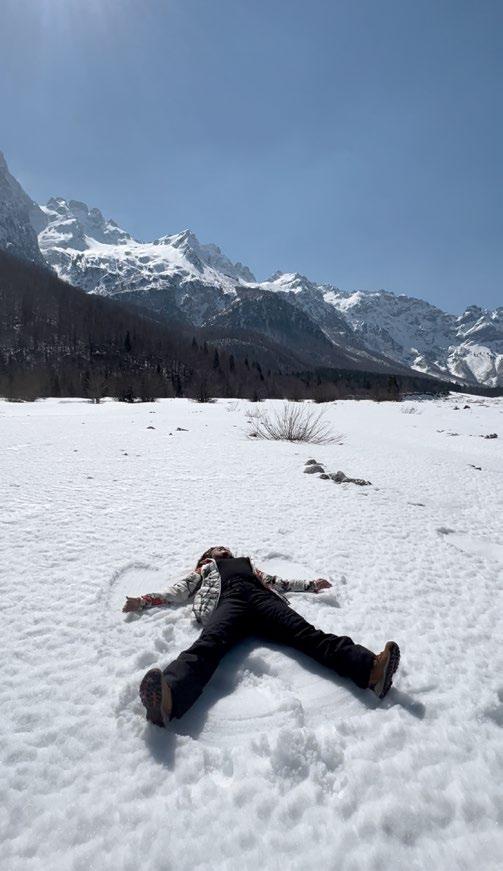
We embarked on another hike after a sumptuous breakfast, more difficult and steeper than the first one. But this time, we did it at a more relaxed pace, and lots of snowball fights in between. When we reached the village of Kukai, I inhaled the air of triumph and gave myself a pat on the back for a job well done.
Back at the guesthouse, a celebratory meal was waiting for us. Our hosts prepared traditional Albanian dishes partnered with mainit na sinaing because they knew that “rice is life” for Filipinos. We concluded our day with homemade bottles of wine and Raki (a fruit brandy celebrated by Albanians), card games, and a Baby Shark dance.
I didn’t have the time to prepare for the hike but I was glad that I
The untouched beauty of Kosovo’s old town instantly charmed us. With the beautiful, snow-capped Sharr Mountains in the backdrop, its iconic Stone Bridge under which Lumbardhi i Prizrenit or Prizren River flows, its winding cobblestone streets, and hundreds of red clay roofs, Prizren gave off fairytale vibes.
didn’t say no to it. Valbona was magical, certainly one for the books!

The untouched beauty of Kosovo’s old town instantly charmed us. With the beautiful, snow-capped Sharr Mountains in the backdrop, its iconic Stone Bridge under which Lumbardhi i Prizrenit or Prizren River flows, its winding cobblestone streets, and hundreds of red clay roofs, Prizren gave off fairytale vibes.
My lower body was still sore from all the hiking that we did in Valbona, and yet I was climbing another steep hillside road, this time to Kalaja Fortress. It was strenuous but there


was nothing more rewarding than the breathtaking view of the Ottomanesque town of Prizren.
We walked leisurely around the city and found an ancient fountain in the heart of Schadervan. Legend has it that anyone who drinks from this fountain will keep coming back to Prizren. Some even claim that the drinker will get married to a Kosovan and live there. When I heard the latter, I immediately drank from it wishing that one day, it would become a reality.

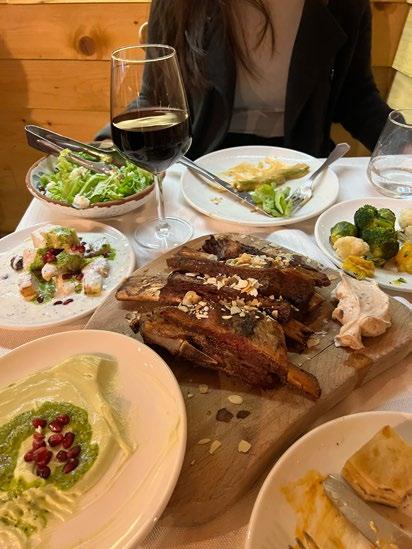
We were set to explore the sunny side of Albania with Skerdi, our tour expert. Skerdi has broad shoulders, a cosmic smile, and a taste for upbeat music. So on our way to Saranda, we turned his car into a mobile party place, dancing and singing our hearts out.
Saranda swept us off our feet with its rocky coastline and scenic bays. We strolled along its charming little bazaar, dotted with quaint souvenir shops and small cafes, then took a long and very steep climb to Gjirokaster Castle which sits on top of a hill. Skerdi is well-versed in its history, so it felt like we were traveling back in time as we roamed around the huge castle.
Scenes from the past continued to flash through our heads as we entered the ancient city of Butrint, a hidden gem stuck in time. It has lots of well-preserved ruins, from an amphitheater to a basilica to other interesting artifacts.
Popular for its spectacular sunset,
we couldn’t leave Saranda without having a glimpse of it. The sun was disappearing gradually as Skerdi drove towards the cliff with open windows, the wind blowing my hair. We were literally chasing a sunset. After a few turns, there it was! A silent prelude to the night. As the sun set on the west, I put all my worries to rest. God was painting the sky with a promise of a new day, what was there to fear?
Known as the ‘City of a Thousand Windows’, Berat is an elegant stoneand-alabaster medieval old town with
a pretty patchwork of window frames all looking toward Osum River. We visited Berat Castle, a fortress perched on a hill and admired the whole city.
Skerdi told us the legend of the Osum River. According to the legend, there was once a beautiful fairy called Osum, and two inseparable brothers, Tomorr and Shpirag. The brave and handsome men both fell in love with Osum and the fairy also loved them both, so she met them secretly without them knowing about one another. One day, Tomorr came to know about his brother’s affair and pleaded Shpirag to give up Osum, but Shpirag got furious and refused. Tomorr’s pain was so great that his scream could be heard in the heavens, he was left with no choice but to fight his brother. With his sword, he cut Shpirag into pieces, while Shpirag hit Tomorr with cannons blowing holes in his body. Both died during the battle. When Osum heard about the tragedy, she was heartbroken and couldn’t stop crying, her tears formed the Osum River which is situated between the Tomorr and Shpirag mountains.
I noticed that Mount Tomorr’s surface was indeed full of holes, while Mount Shpirag had giant scars and was divided into two parts.
They say that autumn is a part of a beautiful cycle of loss, regeneration, and regrowth. I didn’t experience this season physically in the Balkans, but I felt it in the inner depths of my soul.
Tirana is a foodie’s paradise, offering different unforgettable meals for just a few euros. The options were endless!
introduced us to cow head soup, Albania’s hangover soup. We also did a cooking class with Cindi, a strongwilled entrepreneur with bright eyes.
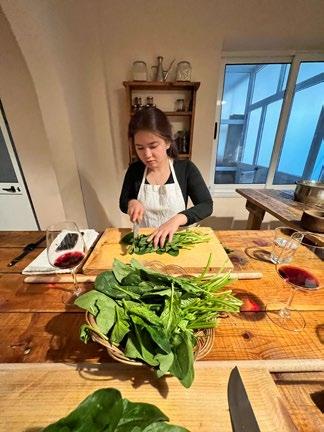
We asked her if she had any plans of moving abroad since her close friends are living in Germany. “If everybody leaves, what will happen to Tirana? The city needs some of its people to stay,” she said resolutely.
In that moment of realization, a powerful insight changed me internally. I thought of each amazing individual that I met during our trip around the Balkans – Andi, our trail leader, gave up an opportunity to study and work in the US to build his own tour company in Albania called “Go as Local”, introducing secret destinations for travelers to discover. Skerdi, our tour expert, is taking up his master’s degree at the same time and has always been very vocal about his big love for the Balkans. Xhulio, our food partner, knows Tirana like the back of his hands and is eager to show the beauty of his city to the world. Even our hosts in Valbona are young brothers who put their hearts into their guesthouse to provide cozy homes and memorable experiences for their guests. Then there was Cindi, our cooking instructor and an online business owner who has a genuine desire to help Tirana flourish.
The fire in their eyes ignited a desire in my heart to also make a difference. Pursuing my purpose may require me to take a road less traveled, but like my new heroes, this is how I will carve my own path.
I went to the Balkans with a mission to find my missing pieces and bring them back with me to Dubai. Ironically, I found myself burying them back under the Balkans’ skin
Explore Albania and neigbouring Balkan countries with Go As Local, and experience a unique holiday.



Contact details: Andie (travel guide Andi) +35 5692708552
Instagram: www.instagram.com/goaslocal/ Website: www.goaslocal.com
 Cindi from Tirana, Albania organizes cook ing lessons for tourists.
The Osum River runs through the city of Berat.
Jezerca Guesthouse in Valvona is surrounded by Accursed Mountain.
Cindi from Tirana, Albania organizes cook ing lessons for tourists.
The Osum River runs through the city of Berat.
Jezerca Guesthouse in Valvona is surrounded by Accursed Mountain.
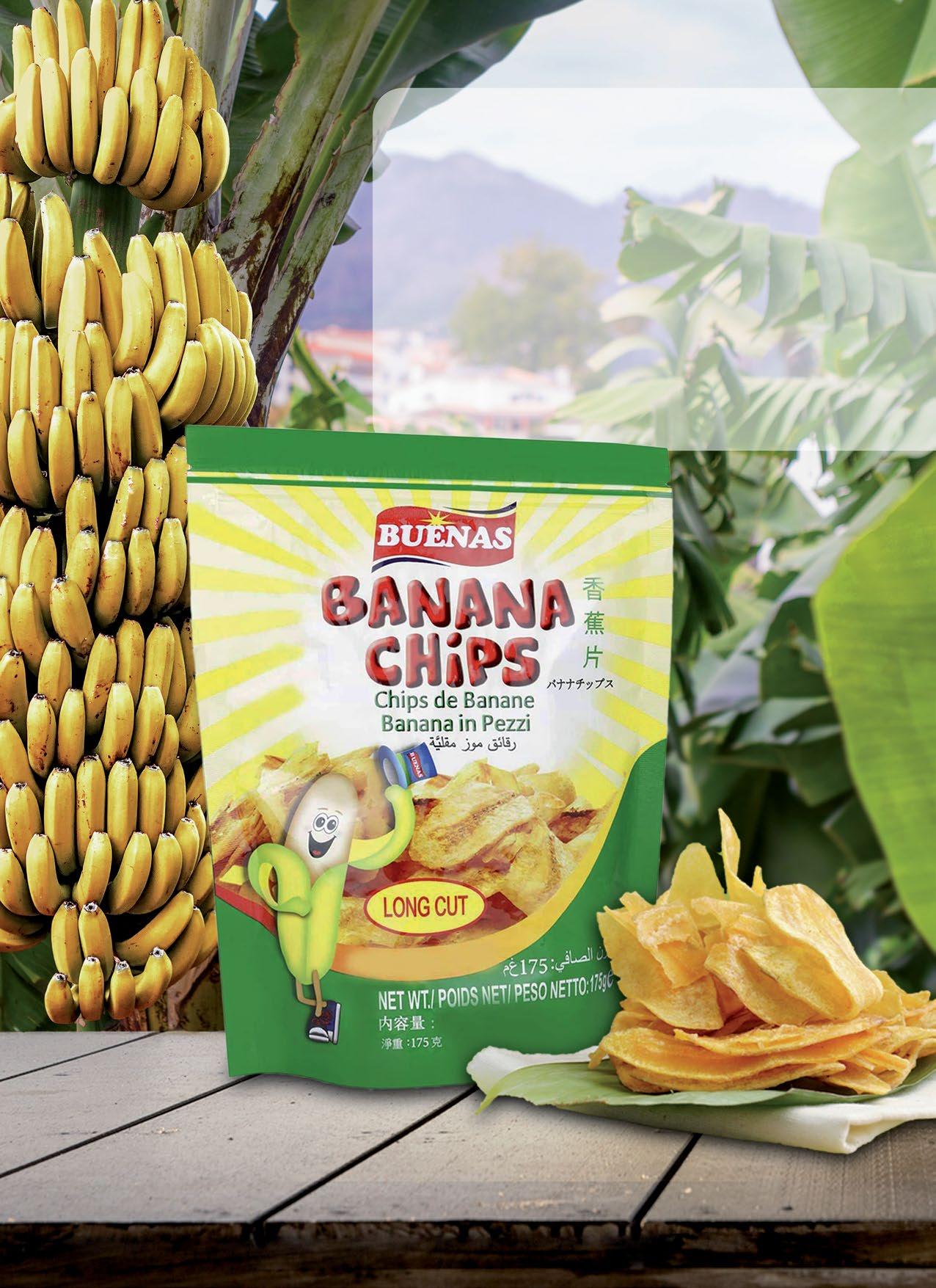
Buenas brings the authentic Philippine kitchen to your home or restaurant with a full range of special products. Being one of the oldest Philippine brands out there, Buenas knows all there is to know about the production of high-quality products. Enjoy the constant and reliable year-round supply of your favorite Philippine condiments brought to you by a brand that never lets you down: Buenas
Are you an interested retailer who wants to carry this product? You can send an email to sales@beagleycopperman.com or visit our website www.beagleycopperman.com for more information.


 By Myls Rubio
By Myls Rubio
Since we moved to Berlin in 2013, we have been fortunate to experience firsthand some of the world´s most beautiful Christmas markets. The holiday season often may be dark and dreary within the European region but no one seems to mind, especially during that magical window between the latter part of November and early January.
There are thousands of Christ mas markets happening across Europe every holiday season. In Ger many, where the tradition is believed to have begun, about 3,000 markets transform the main squares of its cit ies into magical wonderlands.
Germany's Christmas markets date back to medieval times. Some of its existing markets like Dres den's Striezelmarkt first opened in 1434 and Berlin’s first market was recorded to take place in 1530 in Alt-Berlin (old Berlin).
In the early 19th century, the ris ing standard of living and the emer gence of the working class empow ered the growth of these markets. However, as the markets began to cater to the working class, the urban elites veered away from it.
Towards the end of the 19th century, capitalists, and owners of downtown department stores rallied to have the markets moved to the suburbs to avoid competition.
Christmas markets only returned to city centers across Germany by the 1930s with the aid of the ruling German political party. The dying tradition of Christmas markets was brought back to prominence in an attempt to restore the economy and rekindle pride in celebrating German traditions.
And we continue to enjoy this tradition to this day.

Being from a country where Christmas is celebrated as early as September, the thought of spending the holidays away from home can be tough. Not being with family to carry on with our usual Philippine traditions makes us homesick --attending the simbang gabi, eating puto-bumbong, and seeing parols line the streets.


To counter this unpleasant feeling, we have made Christmas markets a part of our yearly family tradition. The markets’ merry and cozy vibe is a poignant reminder of home. With around 80 markets scat tered all over Berlin, we have been trying to visit each one of them over the years. These are our top 3: Weihnachtsmarkt at the Kaiser-Wilhelm Memorial Church
This Christmas market is home to 100 vendors that offer a vast as sortment of hand-crafted ornaments and toys, accessories, and glorious food. It first opened in 1983 and





has an estimated 2 million visitors per year. Located along Breitscheidplatz, we particularly like it because apart from its proximity to our home, it offers amusement rides to its young visitors. This diversion gives us ample time to enjoy the grounds and sip warm glühwein (mulled wine) while our children keep busy and enjoy themselves too. Of course, there must always be room for the traditional bratwurst, stir-fried mushrooms, candied fruits, and gingerbread.
Located in one of the most historical squares in Berlin, this beautiful market is nestled in the middle of the Konzerthaus (Concert Hall), and the Deutscher und Franzö sische Dom (German and French Cathe drals). It is adorned with an enormous Christmas tree that serves as a beautiful backdrop to live perfor mances in front of the Konzerthaus. Large heated tents house stalls that offer unique artisanal products, as well as restaurants that offer warm respite whilst visitors enjoy some local cuisine. This is Berlin's most popular market and is almost never without a huge crowd. Shep
This Christmas market is home to 100 vendors that offer a vast assortment of hand-crafted ornaments and toys, accessories, and glorious food.Myls Rubio and family enjoying their Chrismas tradition of visiting Christmas markets in Berlin, Germany.

A family of five requires a little research and prepara tion when on the move. Planning works wonders for us and ensures our trips are stress-free. Here are reminders to help you plan your family's next Christmas market visit.


Cash is king. While some vendors are more flexible in offering other modes of payment, we find it easier to go about our purchases with cash.

Manage expectations. We have three children and what works for us in ensuring a pleasant visit is plotting a schedule and informing them about it. We tell them in advance that they are only allowed a certain number of rounds on the rides. This lessens the difficulty of weaning them off the market’s amusement section.
Dress properly. You will be outdoors for an hour at the mini mum. Kids are especially sensitive to the biting cold, so it is important to keep them safe and healthy by planning their garb – layers of warm clothing, jacket, overalls, boots, bonnet, shawl, and mittens.
Standing room. Most markets are standing room only. Be prepared to get your glühwein, and roam the market with some warmth in your hands. Kids can enjoy a similar drink too – the kinderpunsch – which is alcohol-free, of course. Otherwise, there’s always hot chocolate. These drinks can be enjoyed in ceramic mugs for a pfand (deposit). You may take these mugs home as souvenirs if you want to, in which case the pfand becomes the price tag.
Don’t forget the pictures. With our hands already full, we seldom bring those big cameras that yield a superb resolution. Our camera phones often do the job for us when we take photos and videos. While photographic keepsakes are nice, know when to stop taking the photos and just be in the moment with your family. Your kids will appreciate the experience with you more than they would any other memento.
Keep safe. We should remain vigilant in the fight against Covid-19 when visiting Christmas markets. Some times, it is better to visit the smaller markets which give the "small town" feel rather than the bigger ones with a large crowd. They can be too overwhelming, especially if you are tagging your little ones along with you. Best to be mindful of the current health protocols and enjoy making memories through the holidays safely.
As parents, we try to find ways to make any foreign place feel like home for our children. It is important that we keep our morals grounded and our Filipino identity strong, while we also learn to appreciate the local culture more. During the most meaningful and wonderful time of the year, we continue to celebrate the beautiful cul tures of the Philippines and Germany as we try to forge new traditions that our family may call our very own.
herding the older kids and maneu vering a stroller with a little one can be a real challenge. Still, this is one of the most picturesque markets we have been to.
One of the biggest Christ mas markets in Germany and the largest in Berlin is located in Altstadt (old town) Spandau. It started welcoming visitors in 1974. In 1977, it im mensely gained popularity when parts of its cultural program were aired via live broadcast. This par ticular Christmas market wel comes approximately two million visitors every year. Daily cultural performances take place onstage. A nativity scene with live animals
in front of the Sankt Nikolai Kirche (St. Nicholas Church) is always a hit with children. Basket weavers, candlestick makers, glassblowers, and porcelain painters proudly display their curated work. Our family loves the amuse ment section in front of the Spandau town hall. It offers the most rides, including the familiar carousel and Ferris wheel which never fails to bring delight to both the young and young at heart. When visiting the bigger markets with kids, choosing the right time is key. We try to go to the bigger markets in the late afternoons on weekdays when there are not too many people.

No matter where we are in the world, Filipinos abroad always look forward to celebrating Christmas back home with families and friends around a table full of mouthwatering Pinoy edibles. The Filipino Expat Magazine asked 12 Pinoy chefs and restaurant owners from different parts of the world to share with us their favorite Filipino Christmas food!
 By Nats Sisma Villaluna
By Nats Sisma Villaluna
A Filipino Christmas is not complete without the presence of the Christmas ham, one of the main “fixtures” at everybody´s noche buena. The most popular hams are the Chinese ham that is saltier and firmer in texture and the other, the pineapple glazed ham topped with pineapple and cherries.

For Amsterdam-based Rhea Topacio-Rogacion, owner of Luneta Ice Cream and Ubeness, Chinese ham was very special in her family. “We only had Chinese ham once a year. We would buy it in Chinatown, Manila. We would normally gather as a family on Christmas eve. It has been a long time since we were complete before my father died.”
Baicel Agdan, owner of La Gran Familia restaurant, in Barcelona, Spain, remem bers her childhood Christmases with fondness. She considers embutido as one of her favorite Christmas dishes. “When I was a child, we would have a family Christmas party and everybody would bring food to be shared with the whole family, embutido, ulo ng lechon, and more. After eating, there were lots of games and prizes. And of course, exchange gifts.” Embutido is a Filipino meatloaf. The word “embutido” comes from the Spanish word “embutir” which means “to stuff”. Its main ingredients include ground pork, sausage or hotdogs, eggs, sweet pickle relish tomato sauce, cheese, minced red and green bell pepper, raisins, carrots. The meat mixture is wrapped in a sheet of aluminum foil and then placed in a steamer to cook.

For Barcelona-based Chef Mario Llorente Babol, Christmas will always mean a hot delicious macaroni soup. This soup is not only simple to cook but the ingredients are easy to find and cheap to buy

A bowl of chicken, chopped ham, elbow macaroni, celery, diced car rots and green cabbage that go with a tasty broth mixed with evapo rated milk is ideal to warm the tummy from the cold Christmas breeze. “At Christmas, there was never a moment without my dad´s macaroni soup back home. He would always use “native chicken” for the yummy taste. Now that I am a chef away from home, I also make my own version of macaroni soup which reminds me of Christmas with my family.” -
Pinoys are not typically known to be cheeselovers. But at Christmas, it is almost a must for every family to have a big ball of cheese wrapped in red sitting prominently in the middle of the table. The queso de bola which literally means a ball of cheese is considered to be a symbol of wealth and good luck. For Chef Hipolito Pagdato Sambajon, owner of Manila Bar Restaurant, Madrid, Spain, “We always had queso de bola at home. Noche buena isn’t complete without one.” For Mary Jane Valencia, owner of Isla Negra restaurant in Barcleona, “Every time I opened our fridge and saw the red ball inside, I would always feel the Christmas spirit.”

Crispy Pata or crispy pork leg is an all-year favorite Filipino dish and pulu tan. But for Kenneth Villanueva, chef of Autentická Filipinska restaurace in Prague, crispy pata was one of the dishes his mother would cook at Christmas. Cooking crispy pata is a bit tedious and challenging because it involves boiling and deep-frying the pig trotters or knuckles at the same time keeping the pork´s skin crunchy. Once it is ready to eat, it can be both sinful and heavenly especially when dipped in a spicy vinegar mix ture. “My Nanay never failed to cook this at Christmas.”
After feasting on the delicious main dishes, it is time for dessert. And the king of them all is the Filipino- style fruit salad which is a mix of diced fruits normally from a canned cocktail. A bowl of colourful chunks of pears, lychees, pineapples, grapes and buko slathered with a thick all-purpose cream (or condensed milk) and syrup is definitely a delight to the eyes and tummy especially for the kids.
For Arianne Kali Bahala, owner of Kasarap restaurant in Barcelona, “Fruit salad is the ultimate Christmas dessert for me because the ingredients can be expensive so we normally had them only at Christmas.”

As the year comes to a close, everybody wishes blessings and long life. And for Filipinos, noodles symbolize long life. So much so that for Bologna-based chef Cecilia de la Cruz and Angelie Authentico, owner of Authentic Angels Bisayang Restaurant in Dubai, pancit canton tops their list of Christmas favorites.


Pancit canton or “cantonese noodles” is forever popular in every party in the Philippines. So it won´t be a surprise to see a trayful of stir-fried noodles with strips of chicken, shrimps, sliced pork, carrots and cabbage on the table ready to be devoured. “Pancit canton always reminds me of my childhood and family at Christmas,” says
Another popular traditional Filipino cake at Christmas is puto bumbong. This purple rice cake made from white and purple glutinous rice steam cooked inside greased bamboo tubes is locally known as puto bumbong. Traditionally, puto bumbong is sold outside churches for mass-goers to enjoy after the sim bang gabi mass. For Tirana-based Chef Eric Layno, nothing beats their local puto bumbong. “Although we can eat puto bumbong anytime, it is different to enjoy it at Christmas. We have the best in my province Bataan especially if there's a lot of mantikilya.”
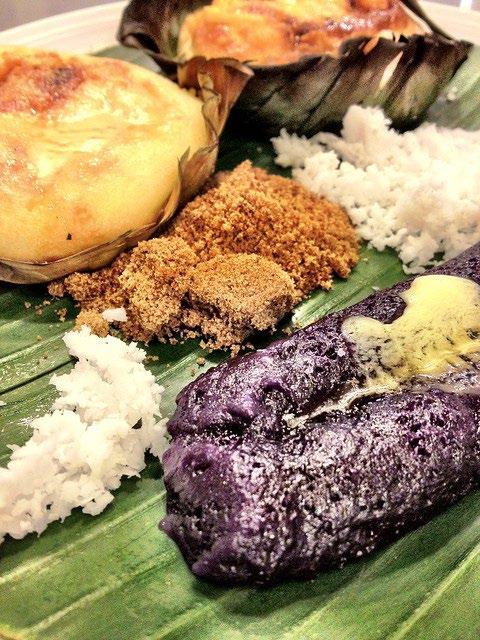

For Chef Morris Danzen of Sciacca, Italy, his favorite Christmas food is the bibingka. “I grew up in a small town and after the simbang gabi mass, I could smell the smoke from the burnt charcoal. I love the sweet and salty taste of the bibingka cake and salted egg. The aroma of the banana leaves. And not to forget the “kinayod na niyog”. Bibingka is a Philippine cake made from slightly sour grounded fermented sticky rice mixed with water, butter, sugar, cheese and coconut milk with salted eggs as toppings and is traditionally cooked with banana leaves.
Cebu´s mouthwatering sticky rice cake with juicy mangoes and hot chocolate is also perfect for the holiday season. Puto maya is made from steamed glutinous rice, ginger juice, and coconut milk and wrapped in banana leaves. Sikwate is hot chocolate prepared by mixing tablea (cocoa tablets) and brown sugar into a pot of boiling water and stirring it until combined and fully dissolved. According to Dubai-based chef Marlon Marqueda, “After sambang gabi, I remember eating puto with sikwate and ripe mango from a nearby store selling delicious Cebuano delicacies.”




Despite the lingering Covid-19 pandemic, the summer of 2022 finally allowed much-awaited events to happen, from art exhibits, cultural festivals to book launches. We highlighted some of them:



In September 2022, the Philippine Embassy in The Hague, Netherlands mounted an art exhibit called Kalayaan in Full Color: An Art Exhibition featuring the diverse and Maricel Mercado-Lelieveld, Victor Cantal, Jesamine Totañes-Wiersema, and Marites van Vianen. From left: Victor Cantal, Maricel Mercado-Lelieveld, Marites van Vianen, and Ms. Elea V. Perez, Cultural Officer and Economic Attaché.




